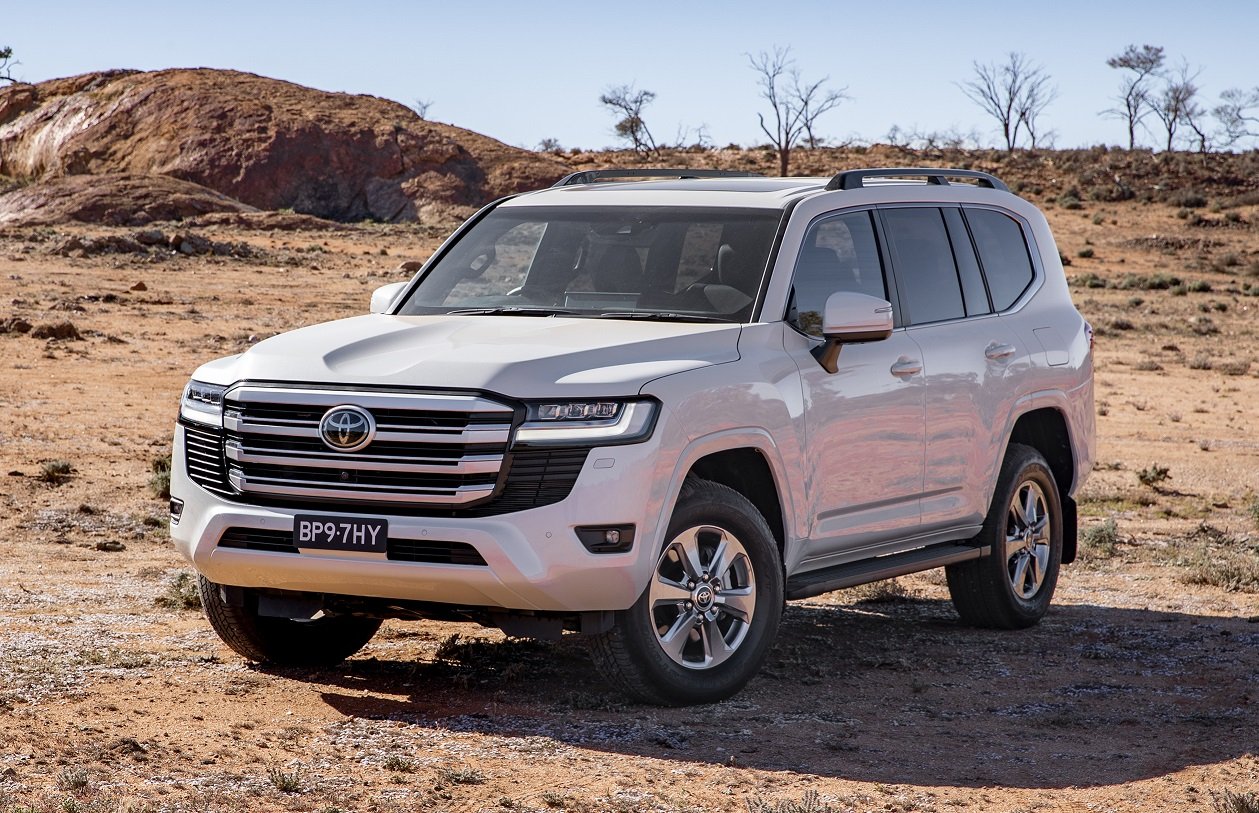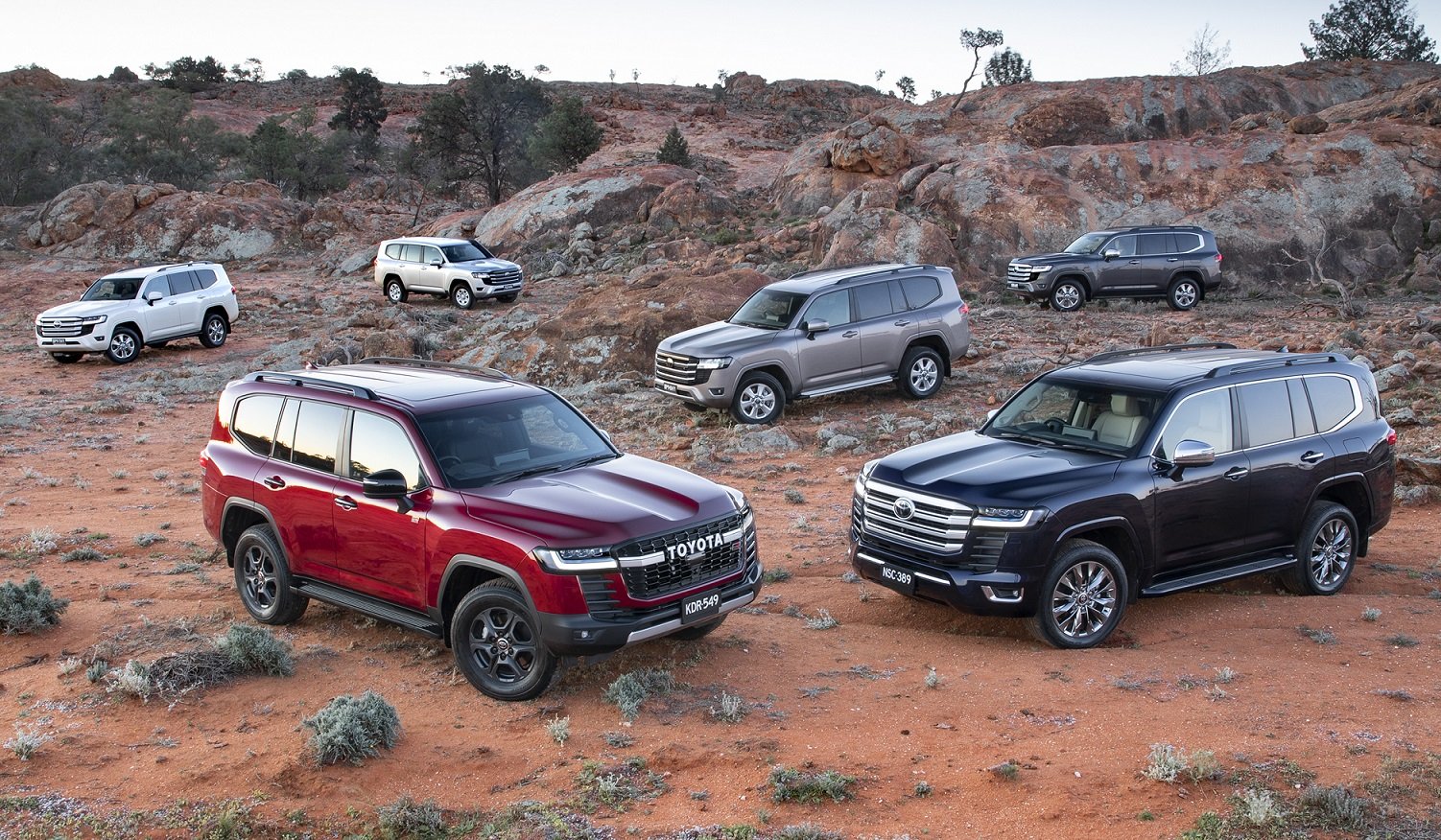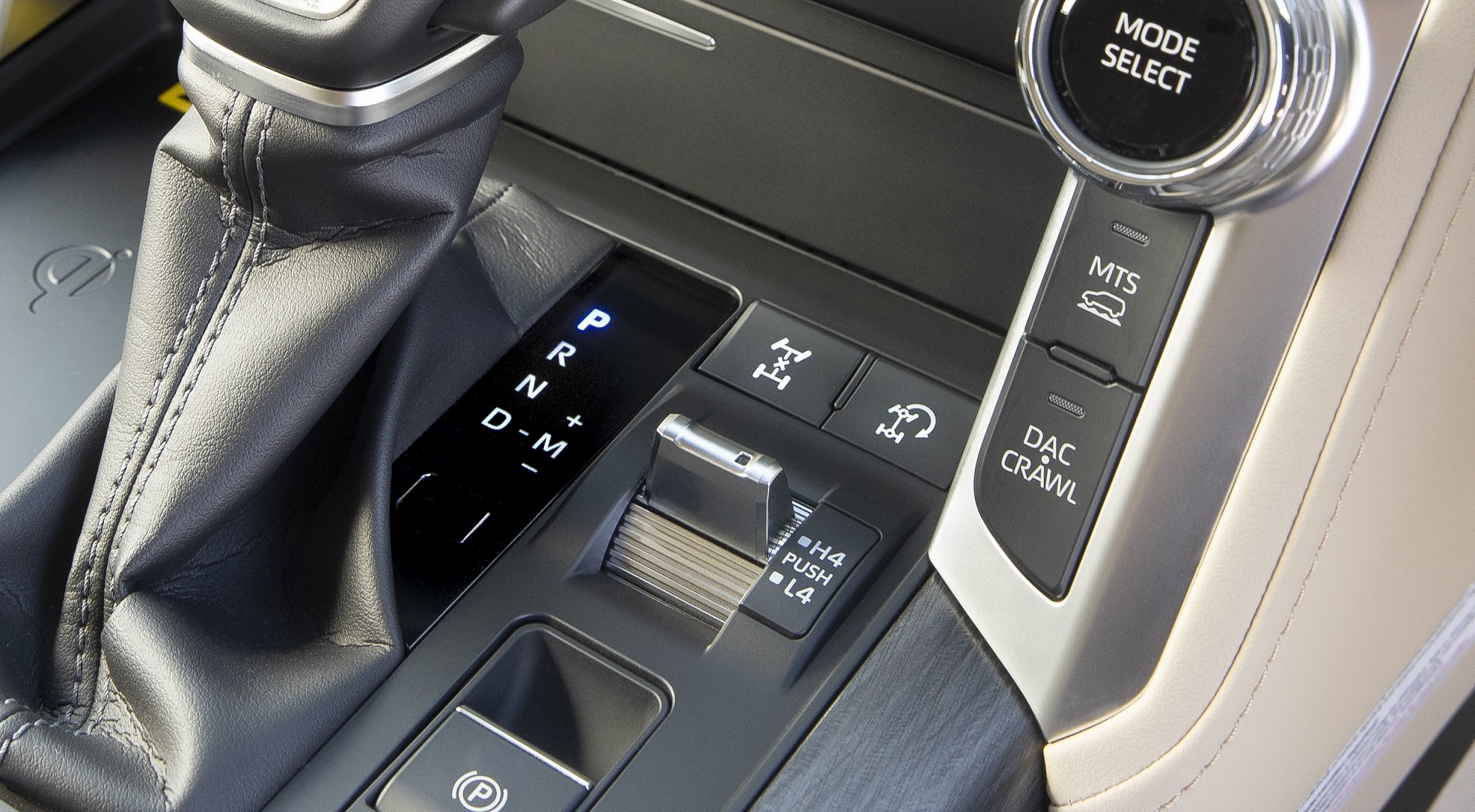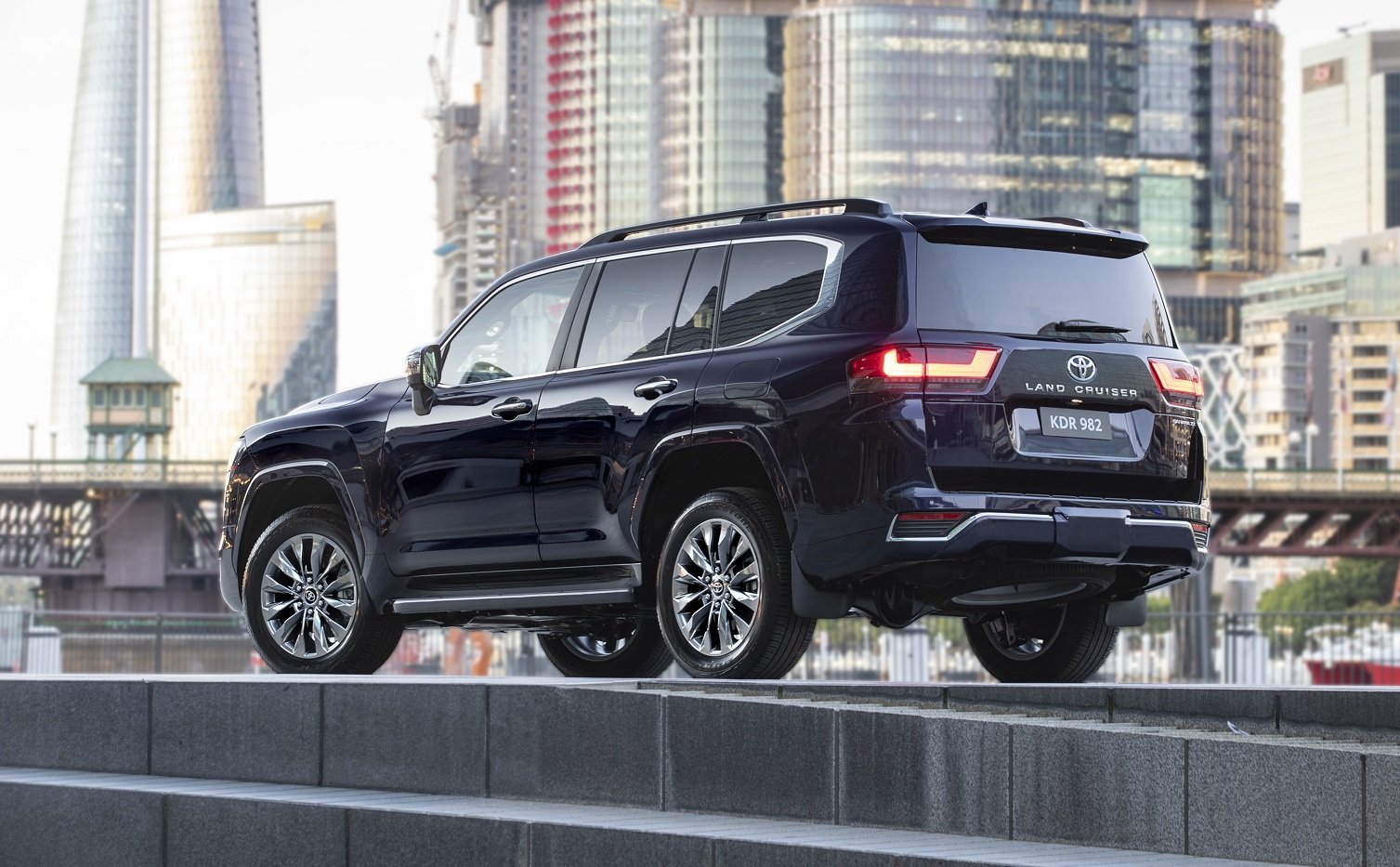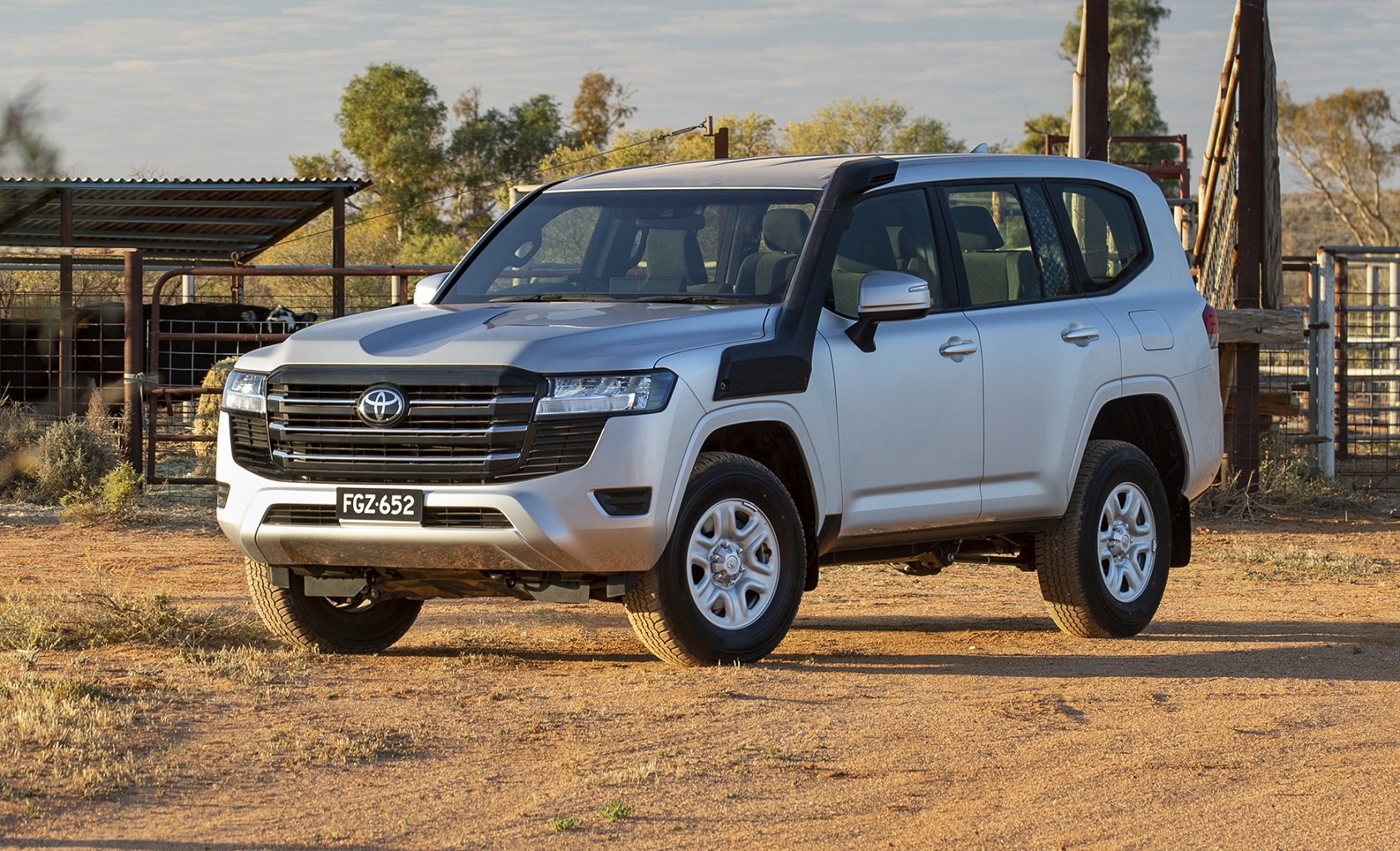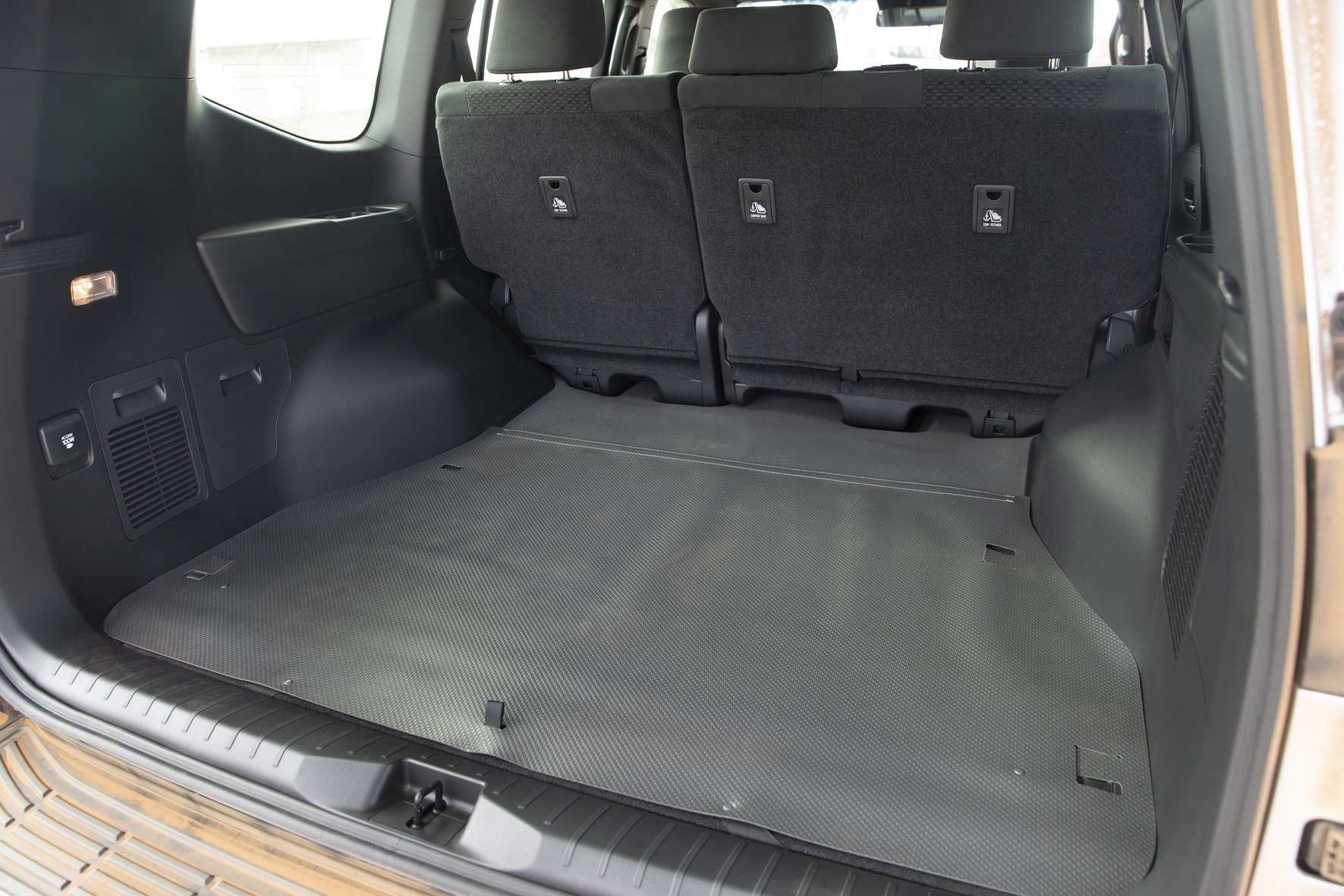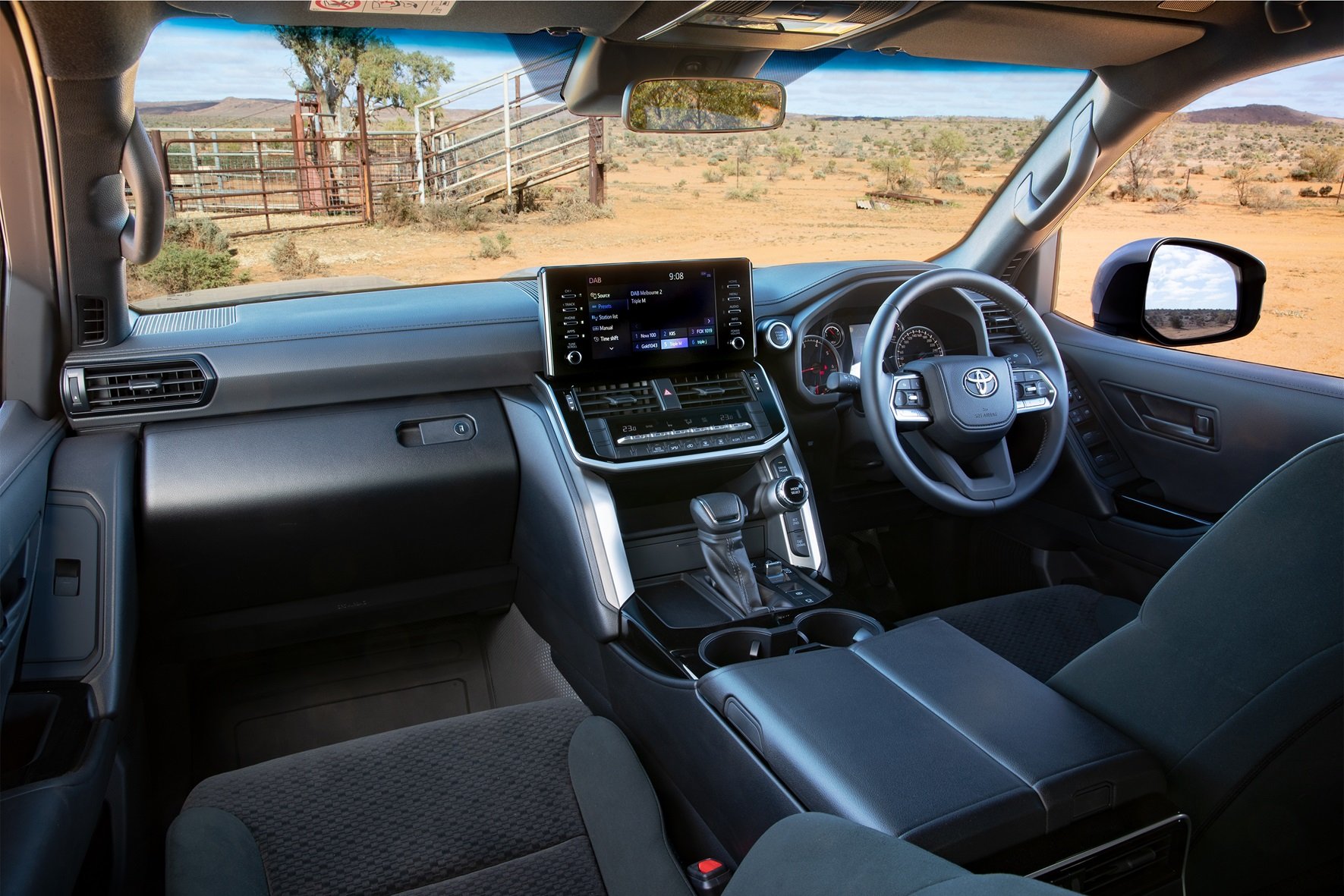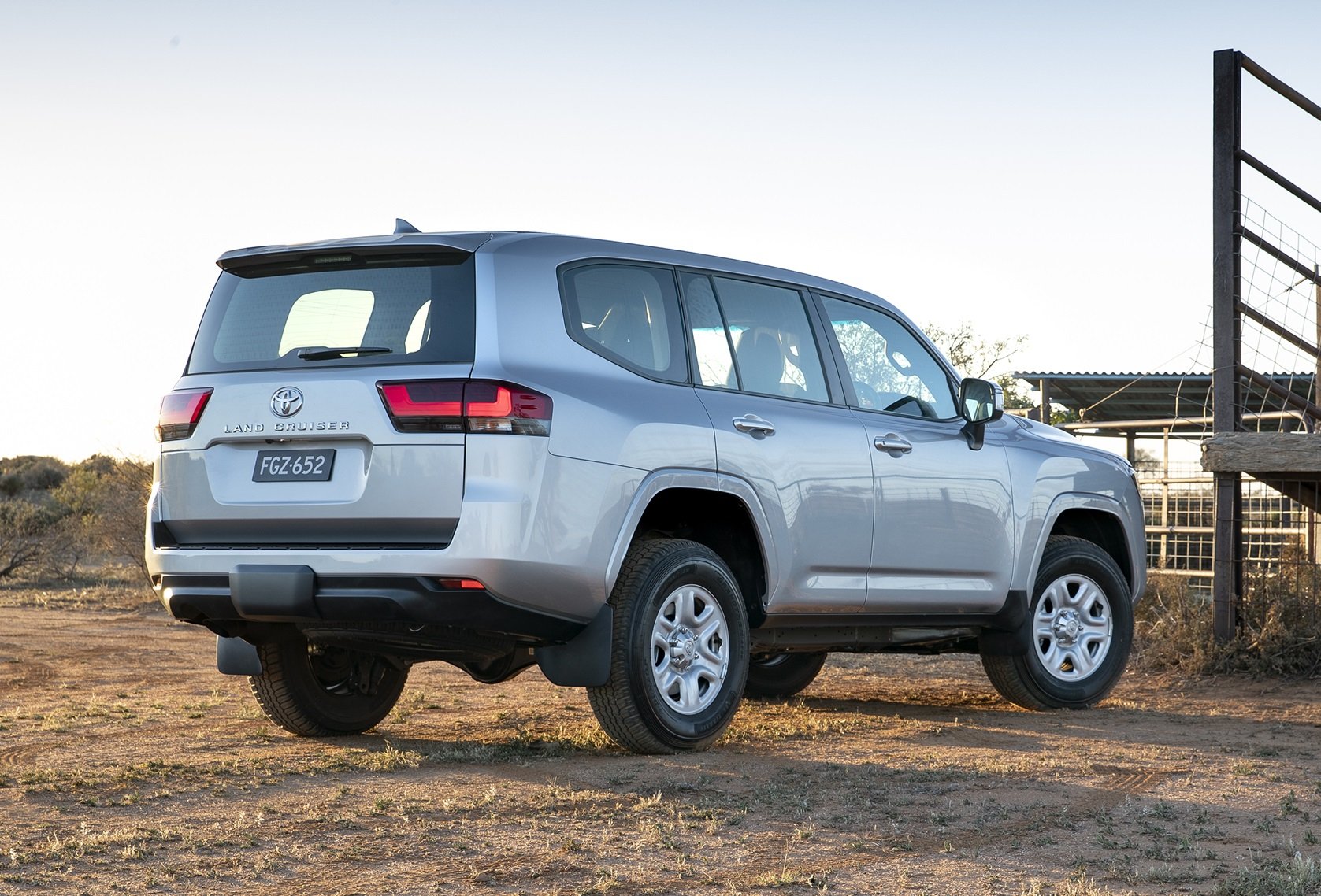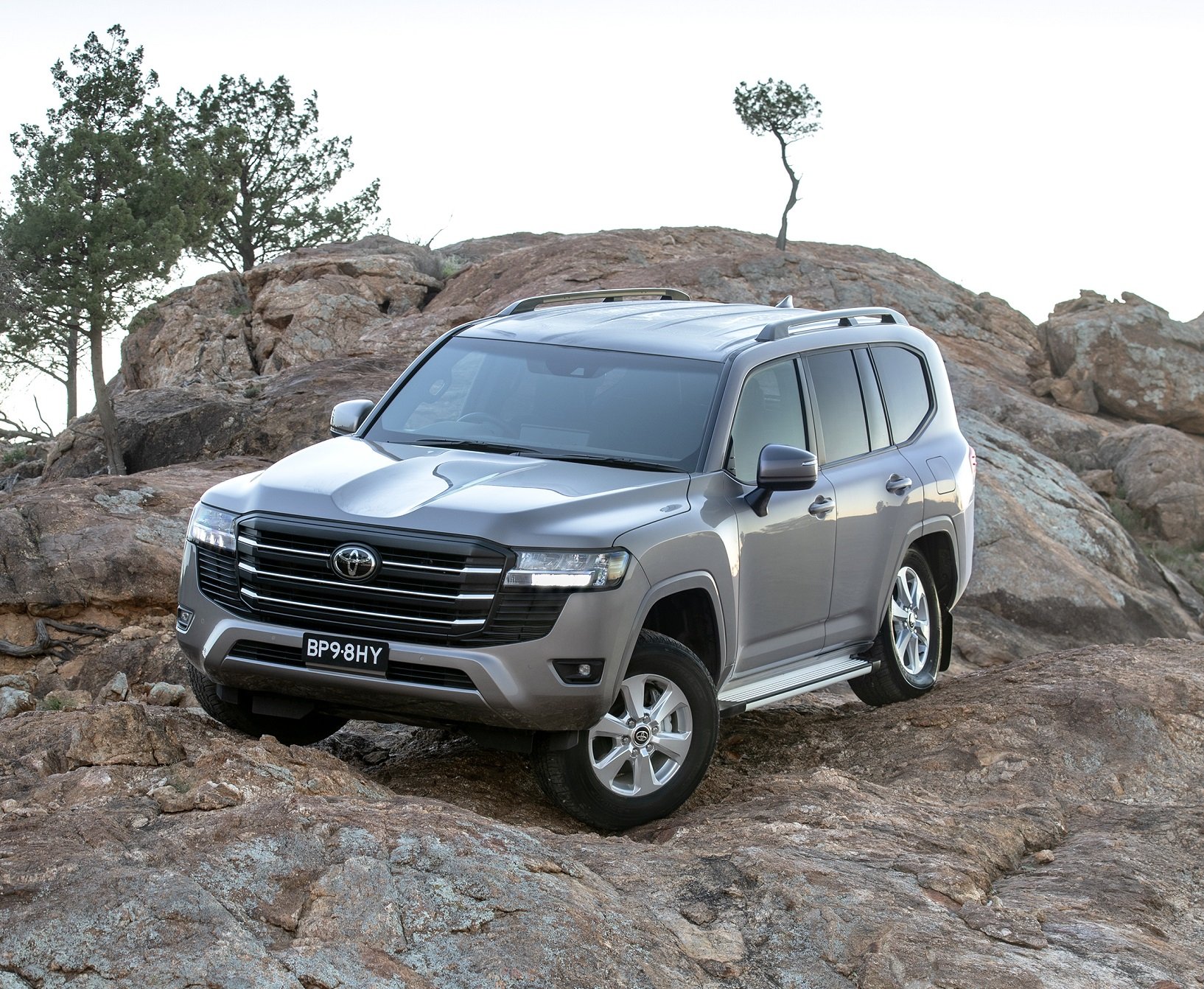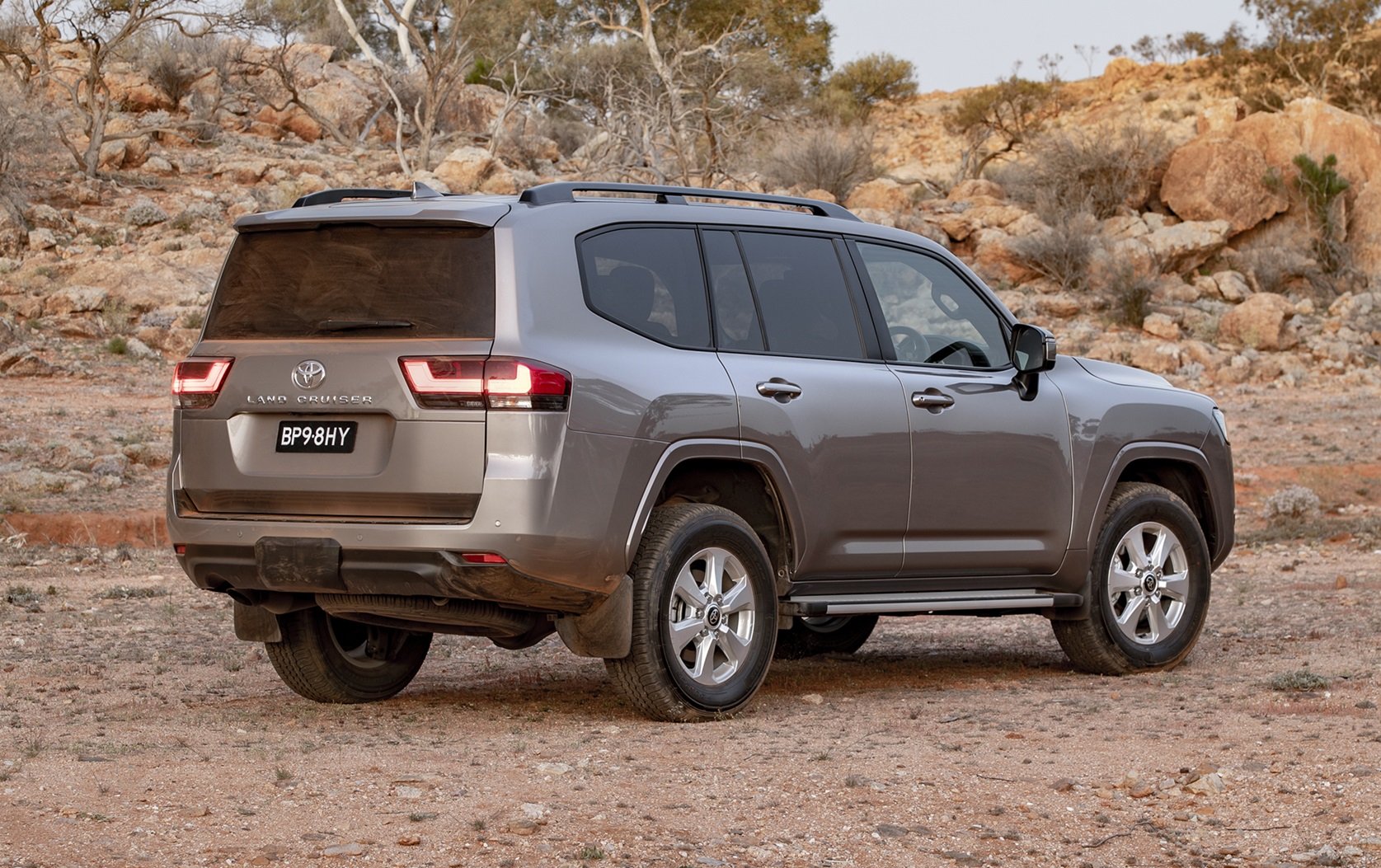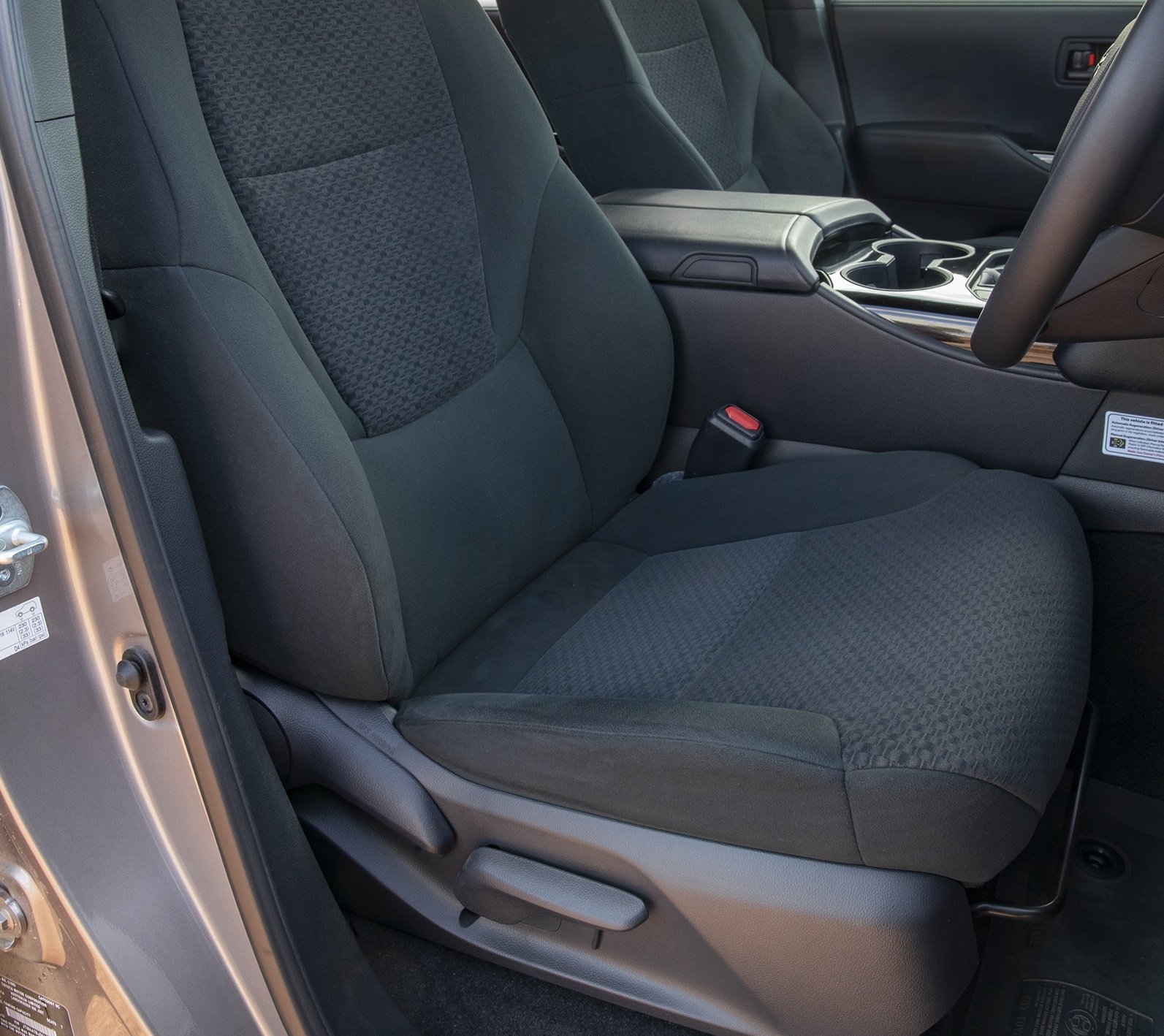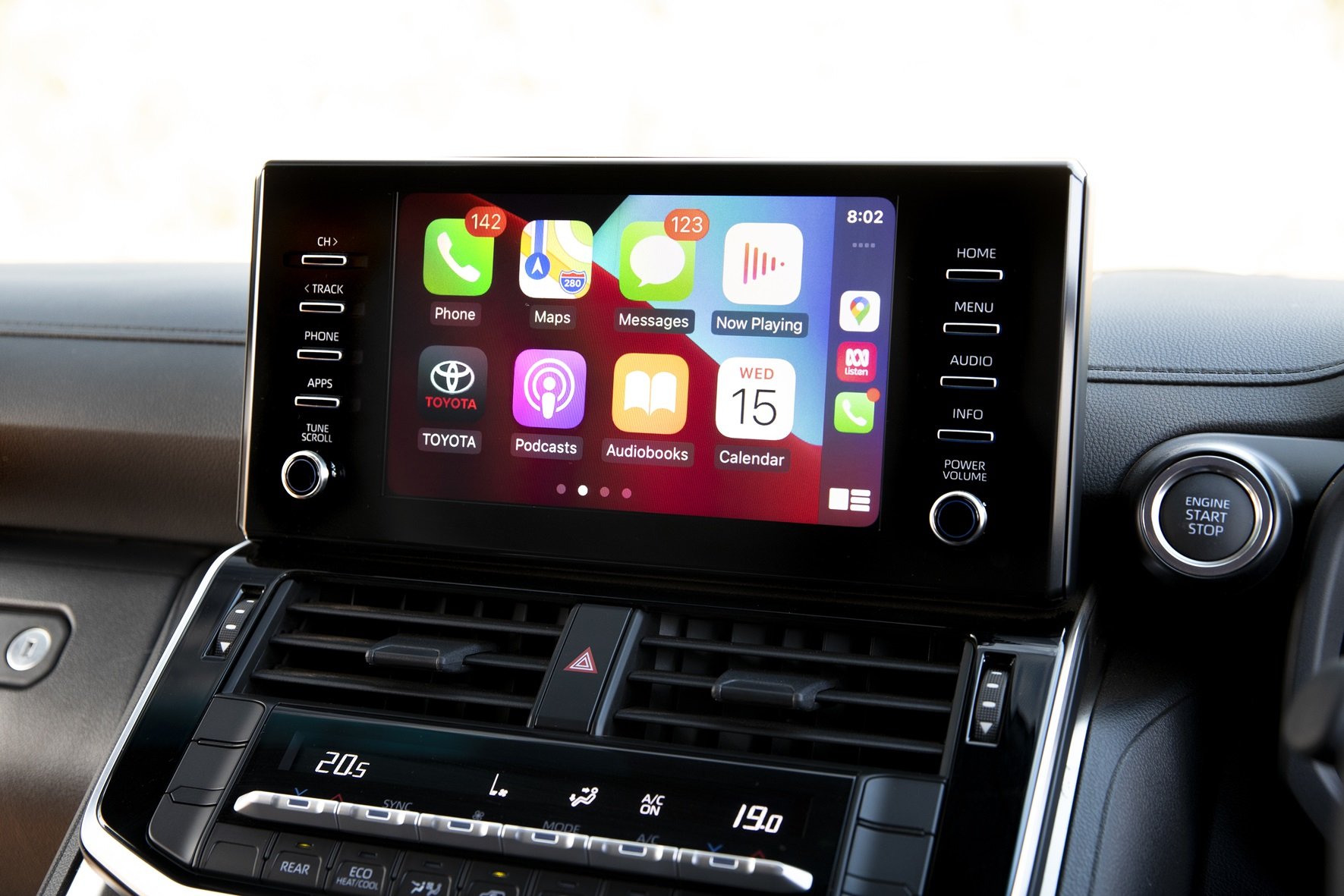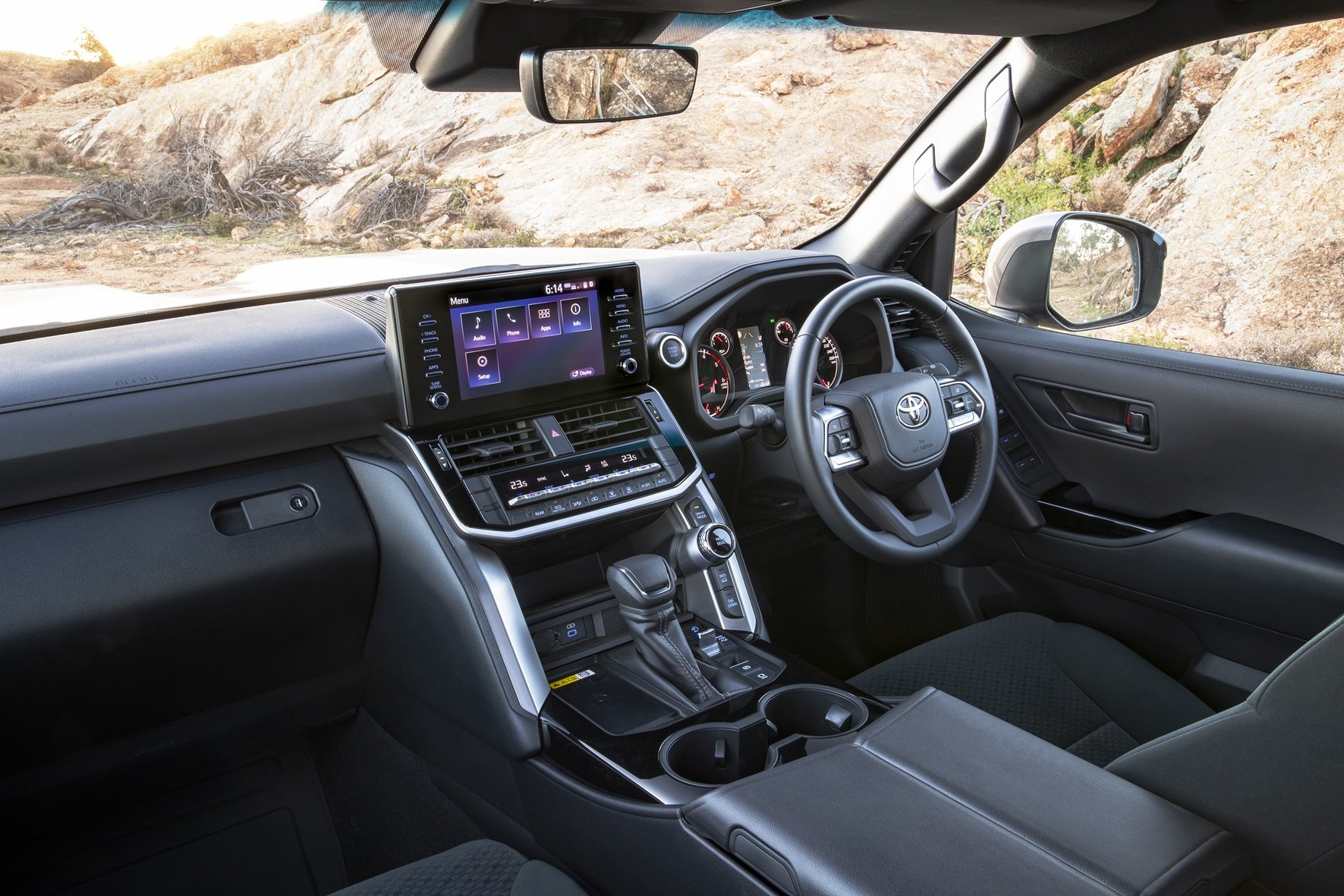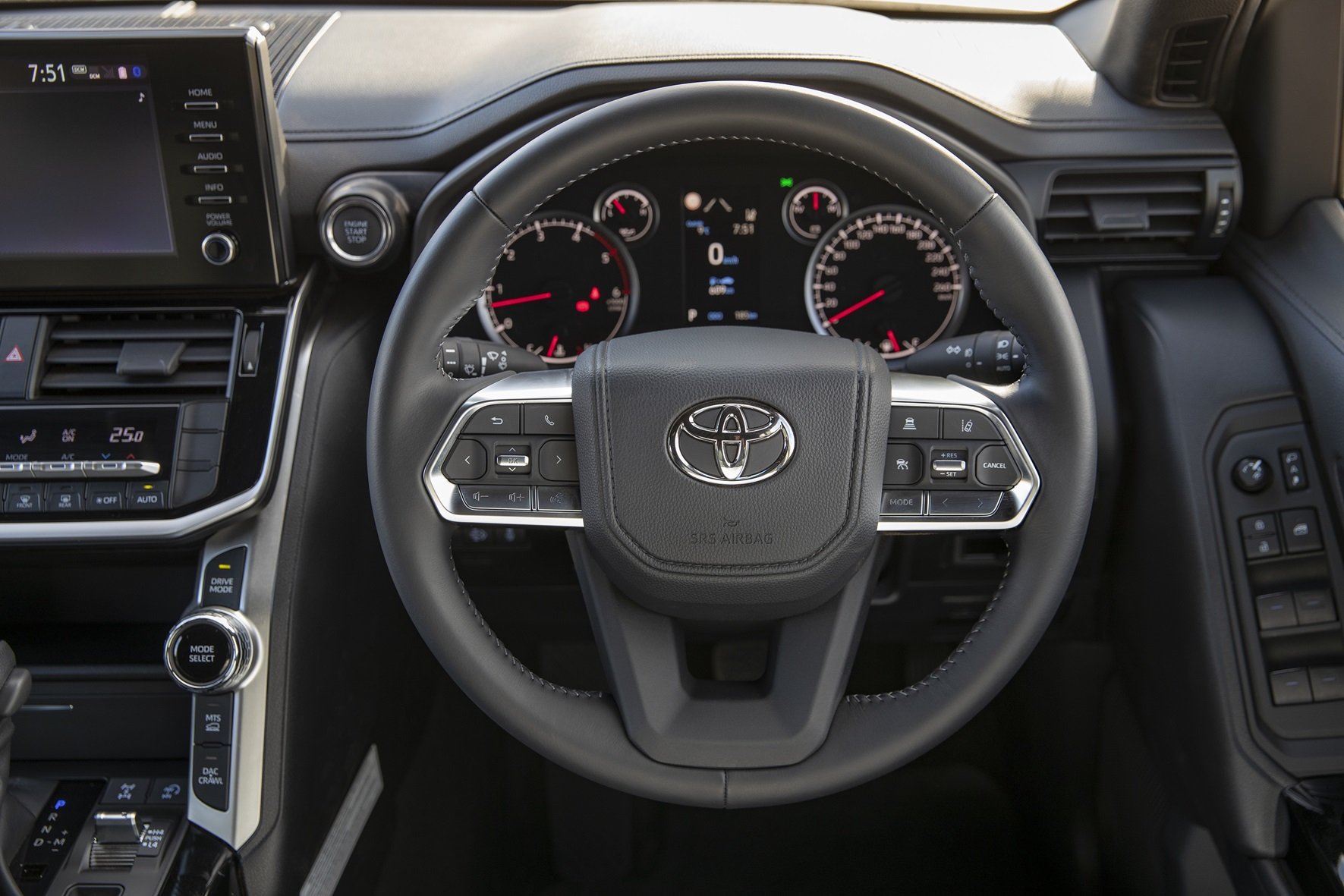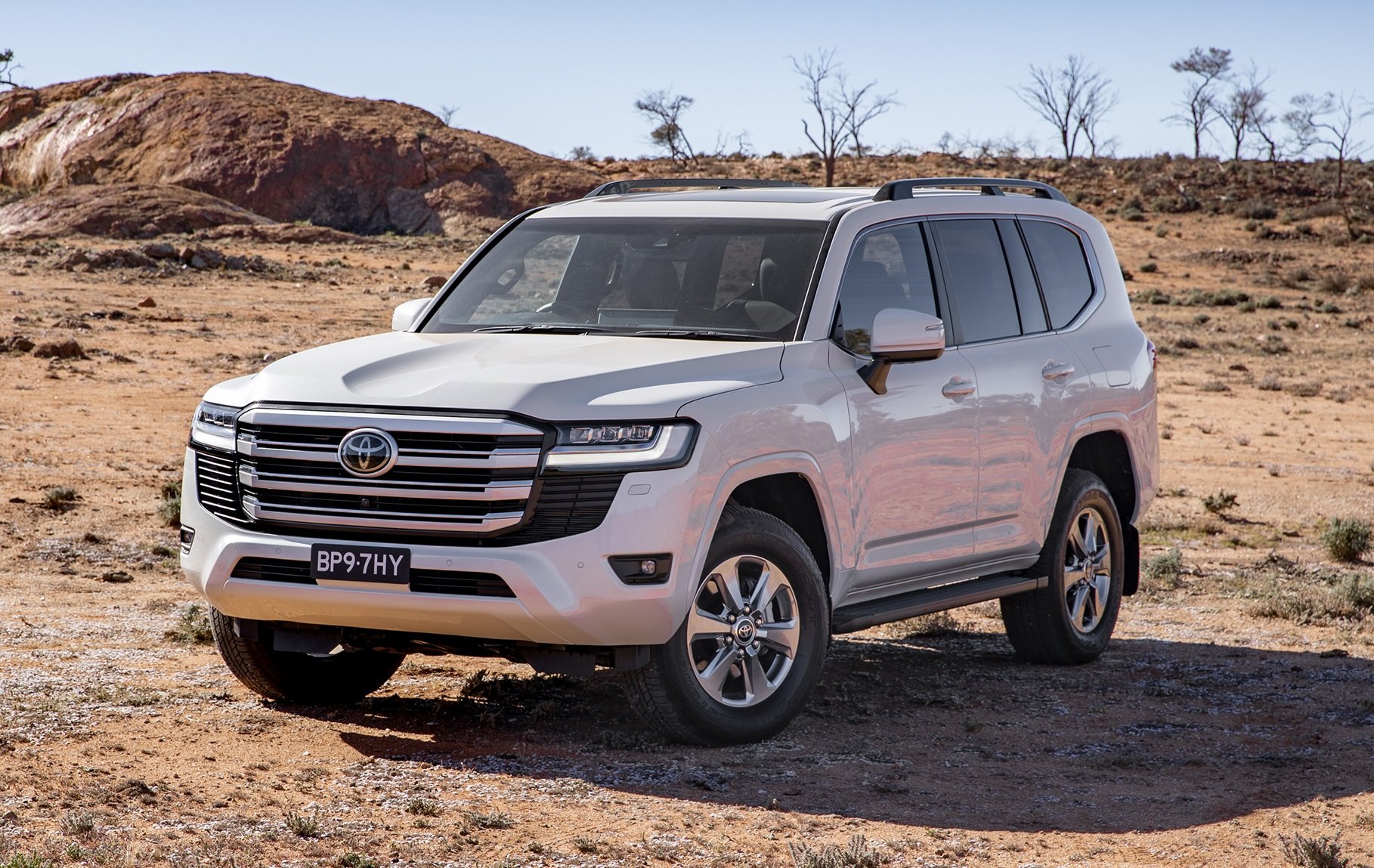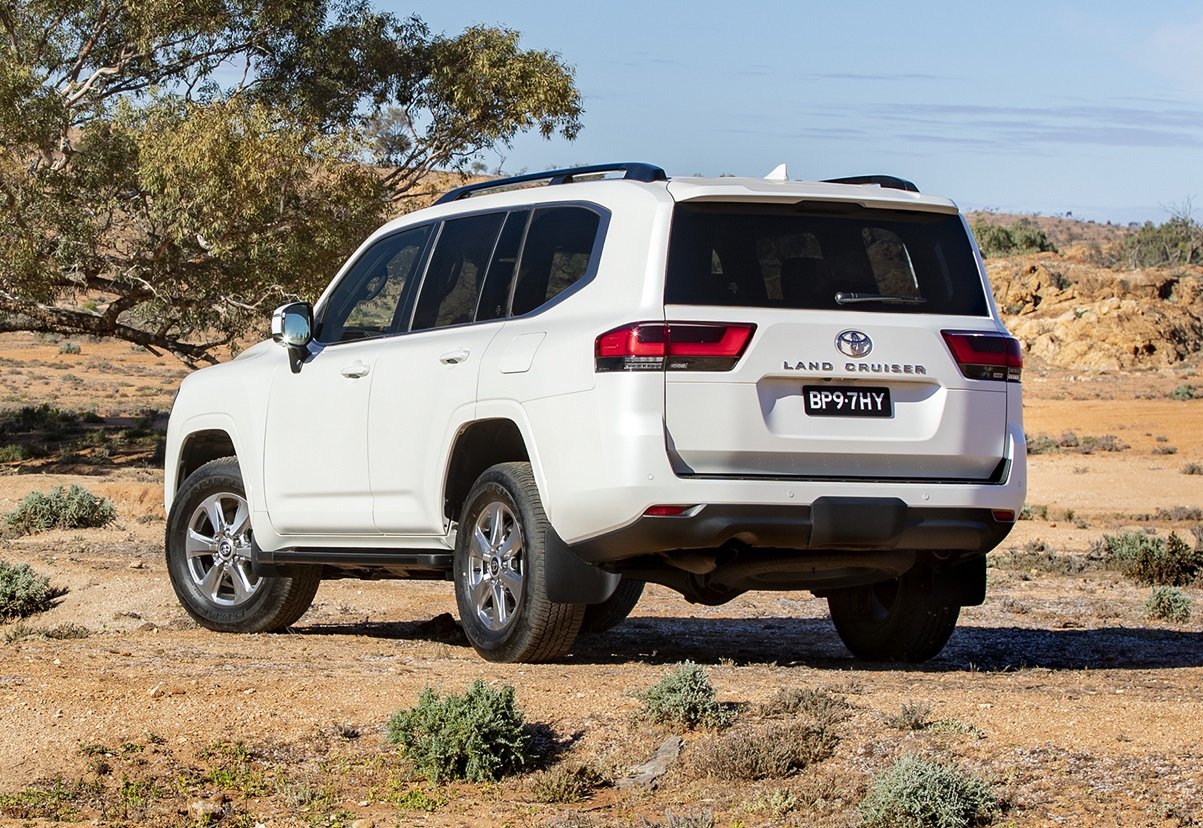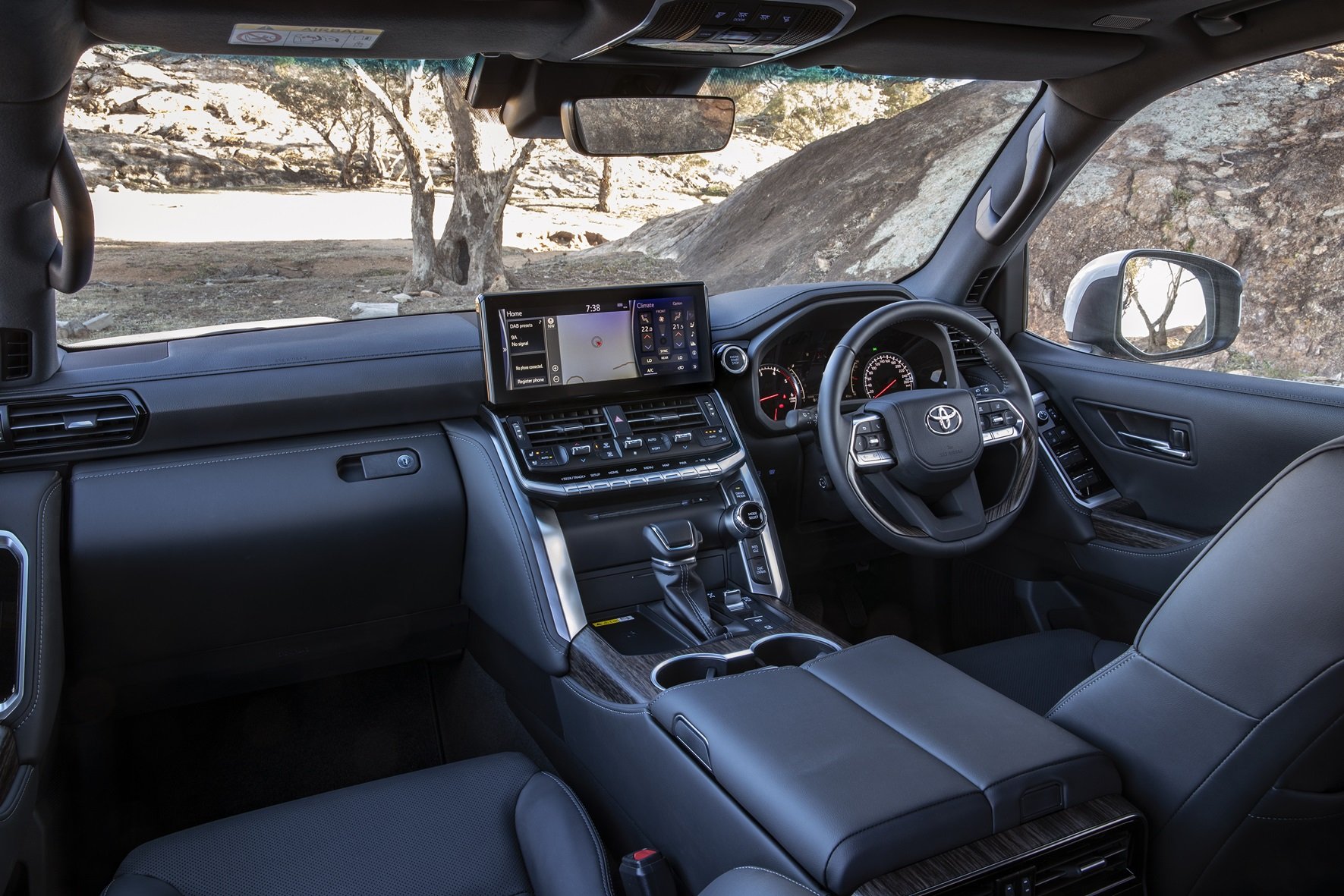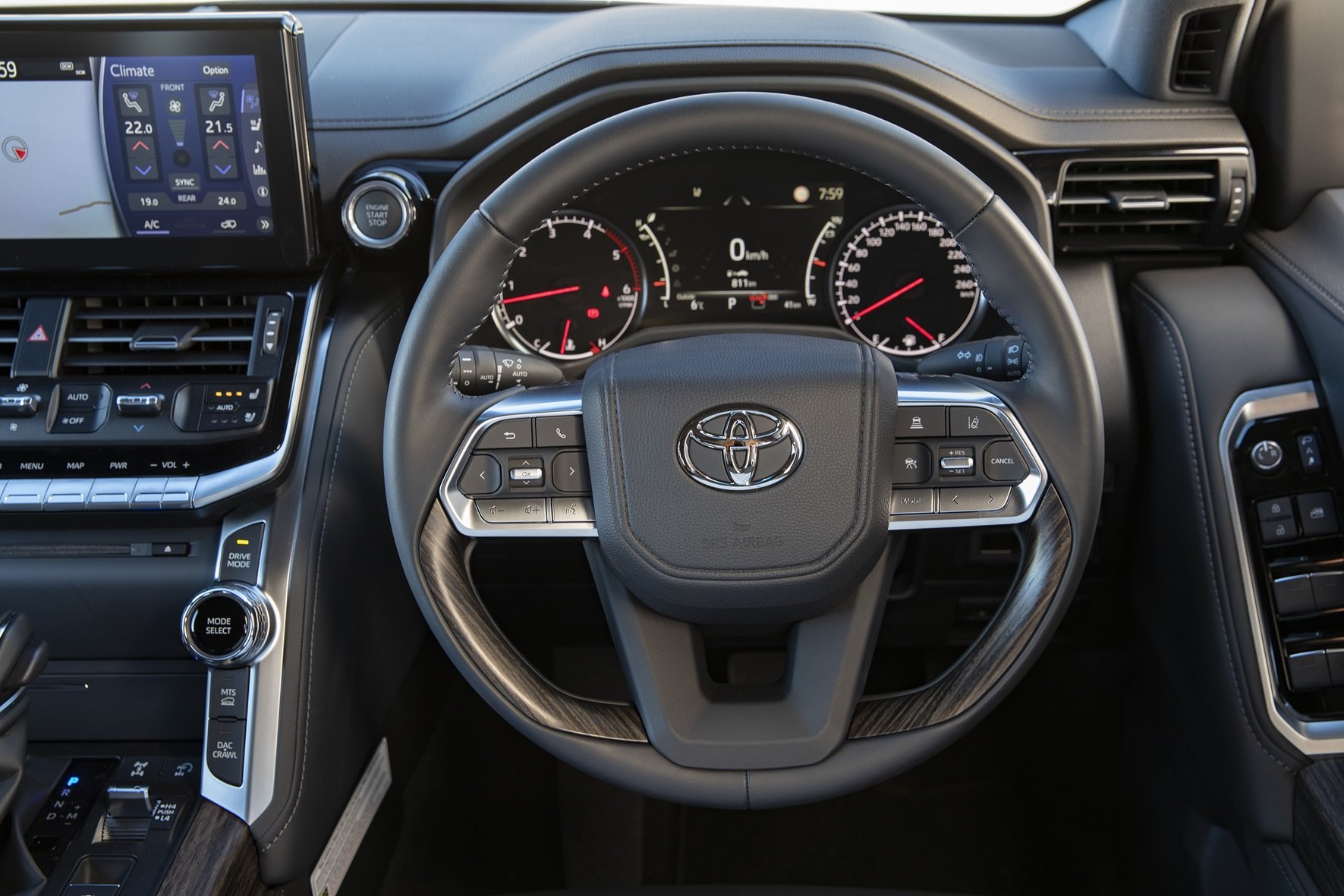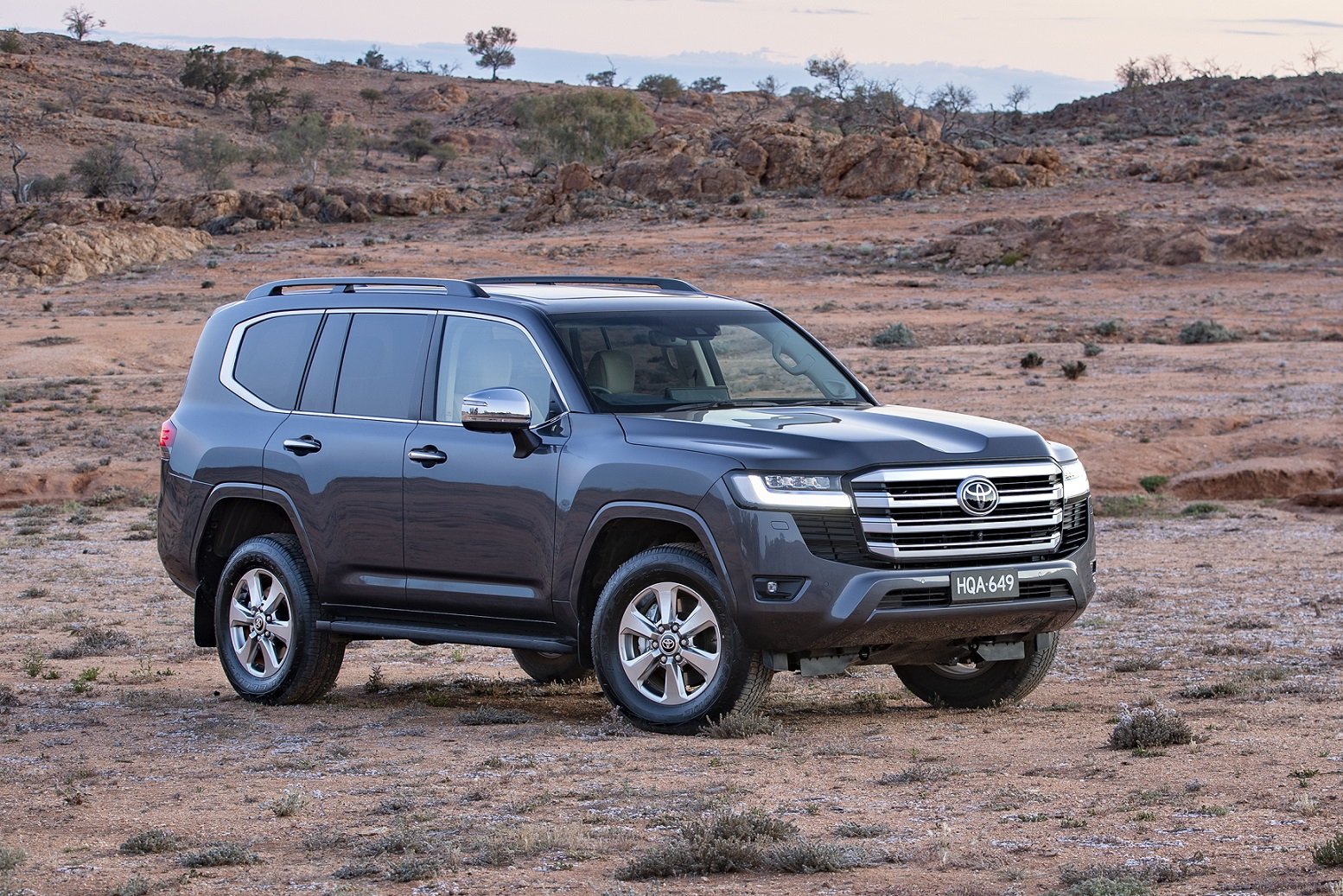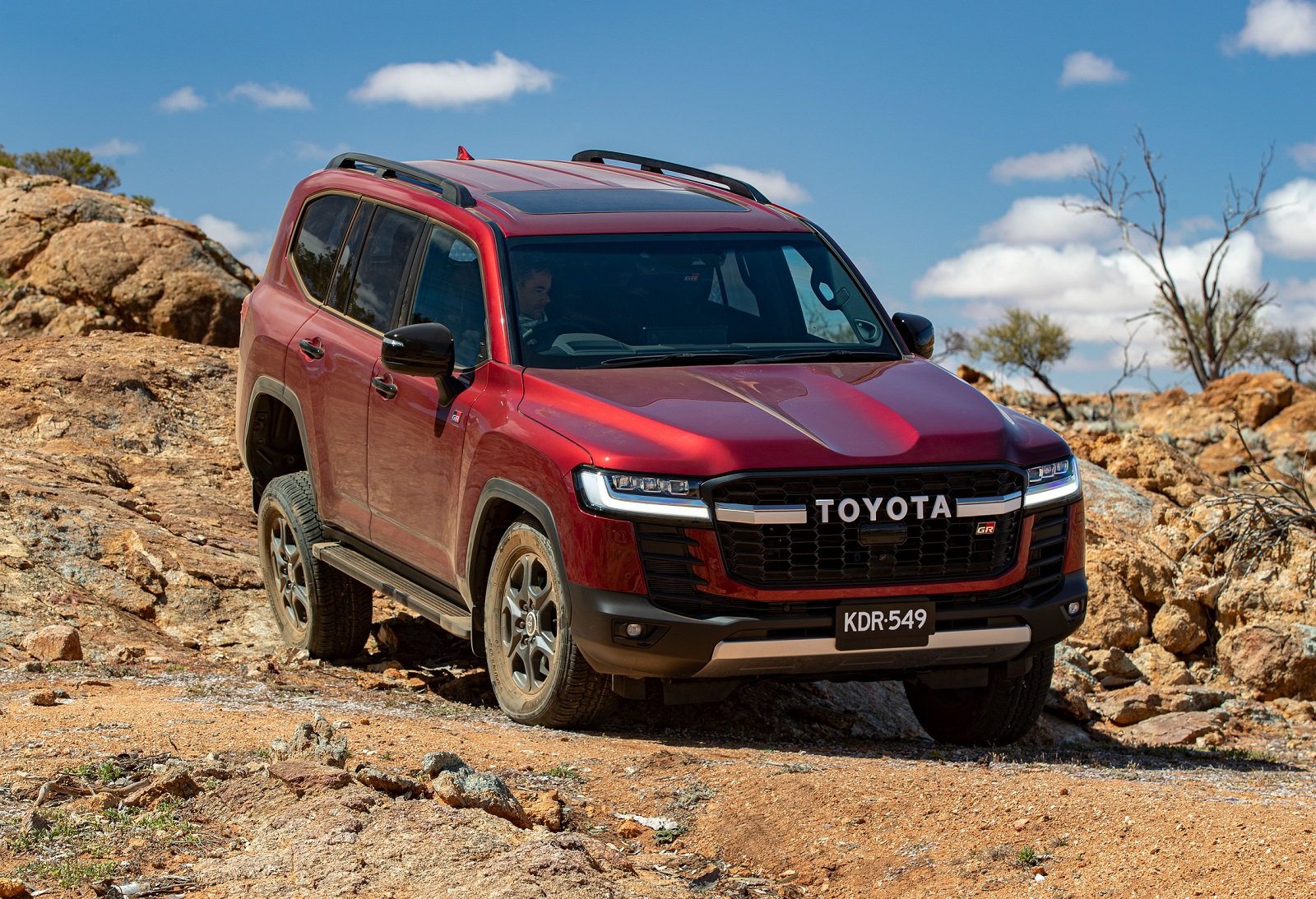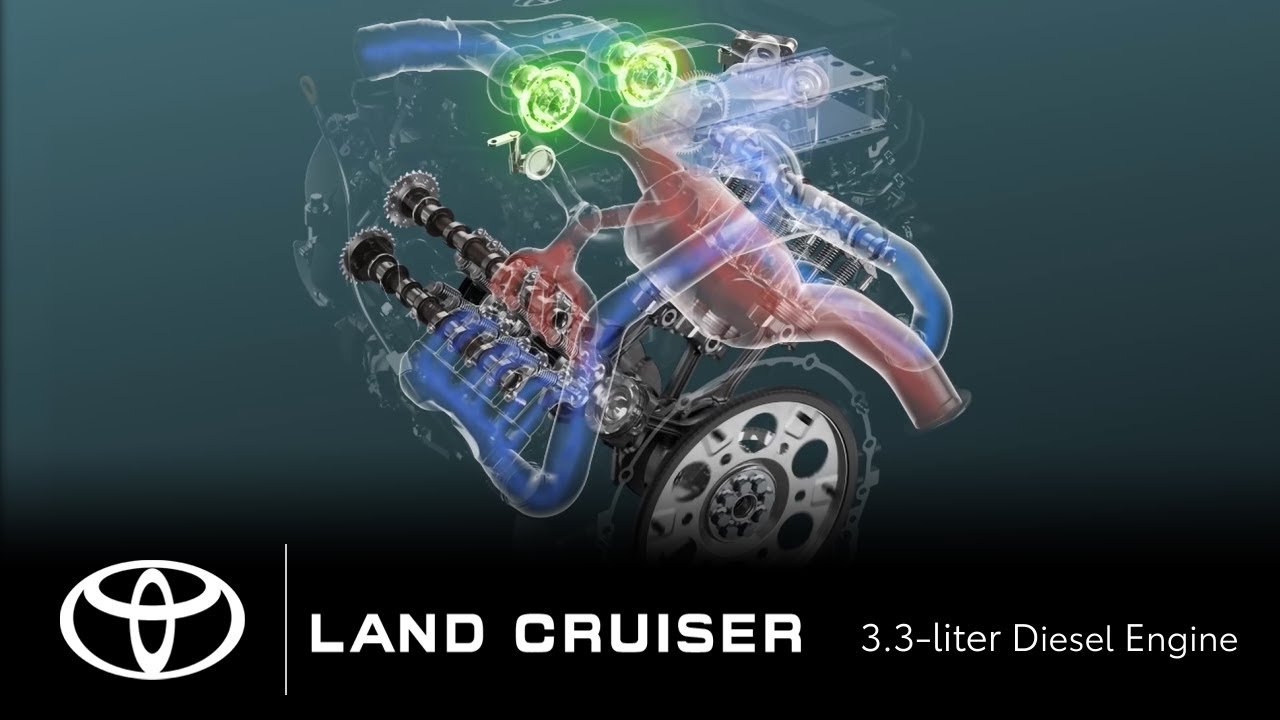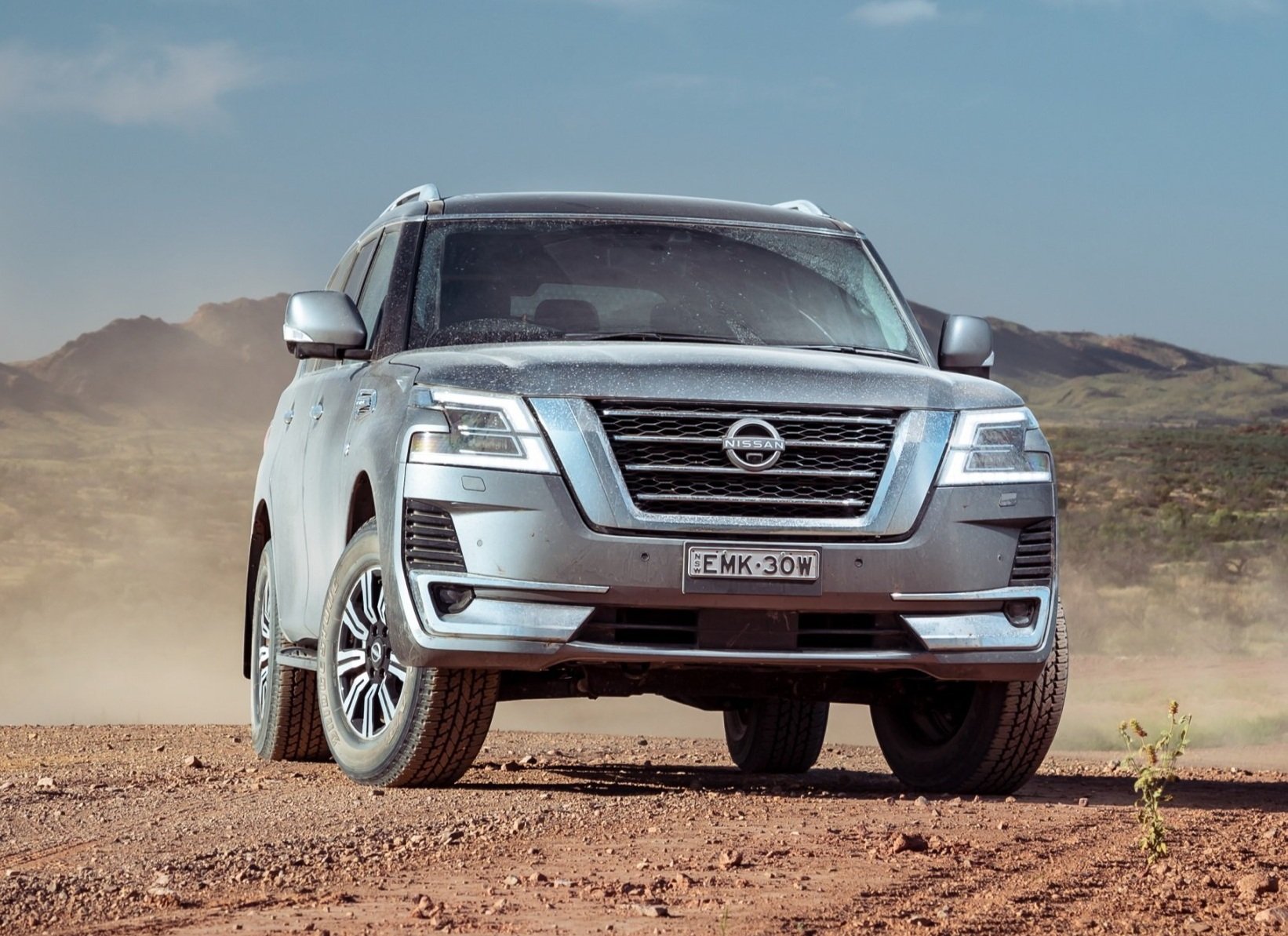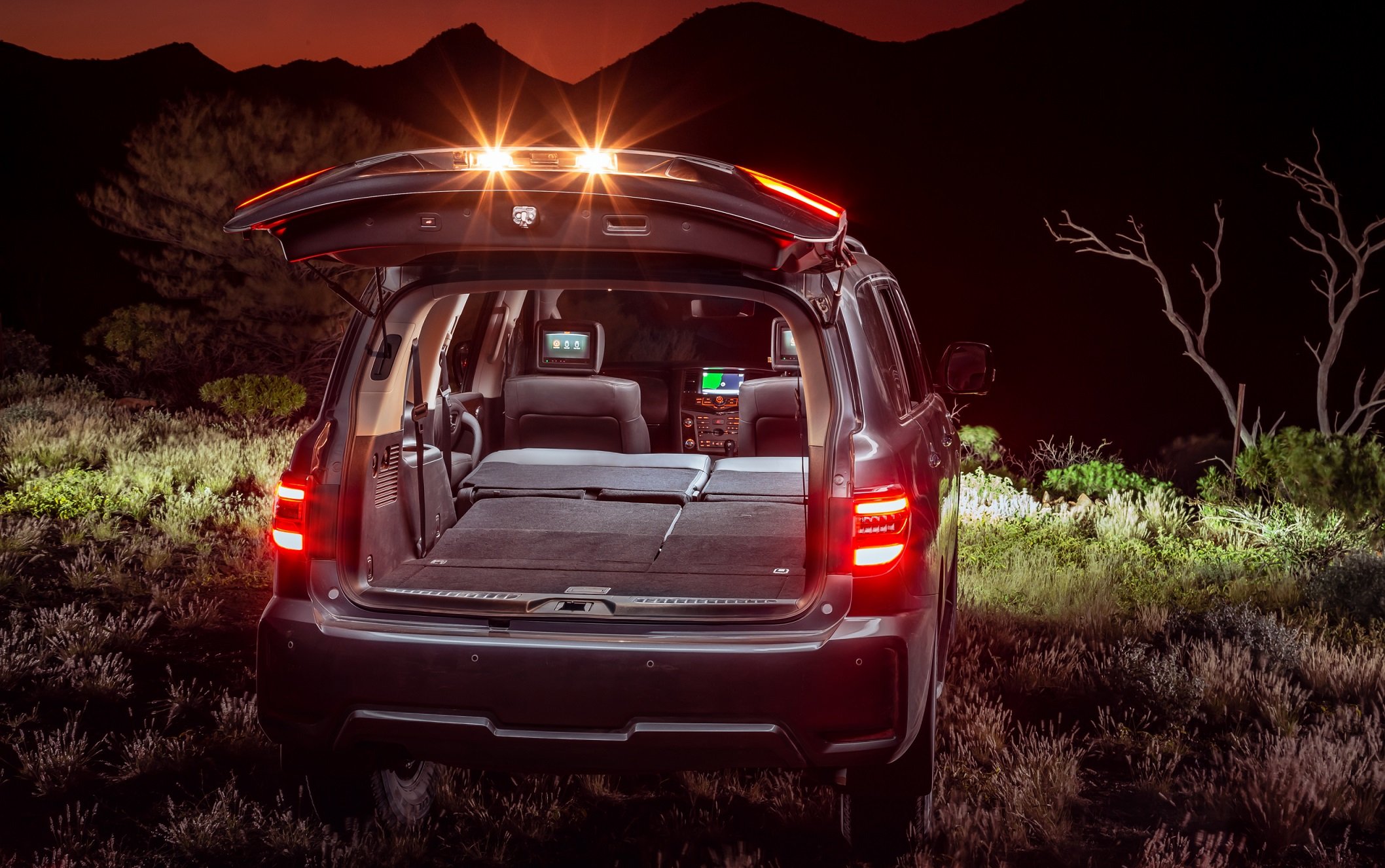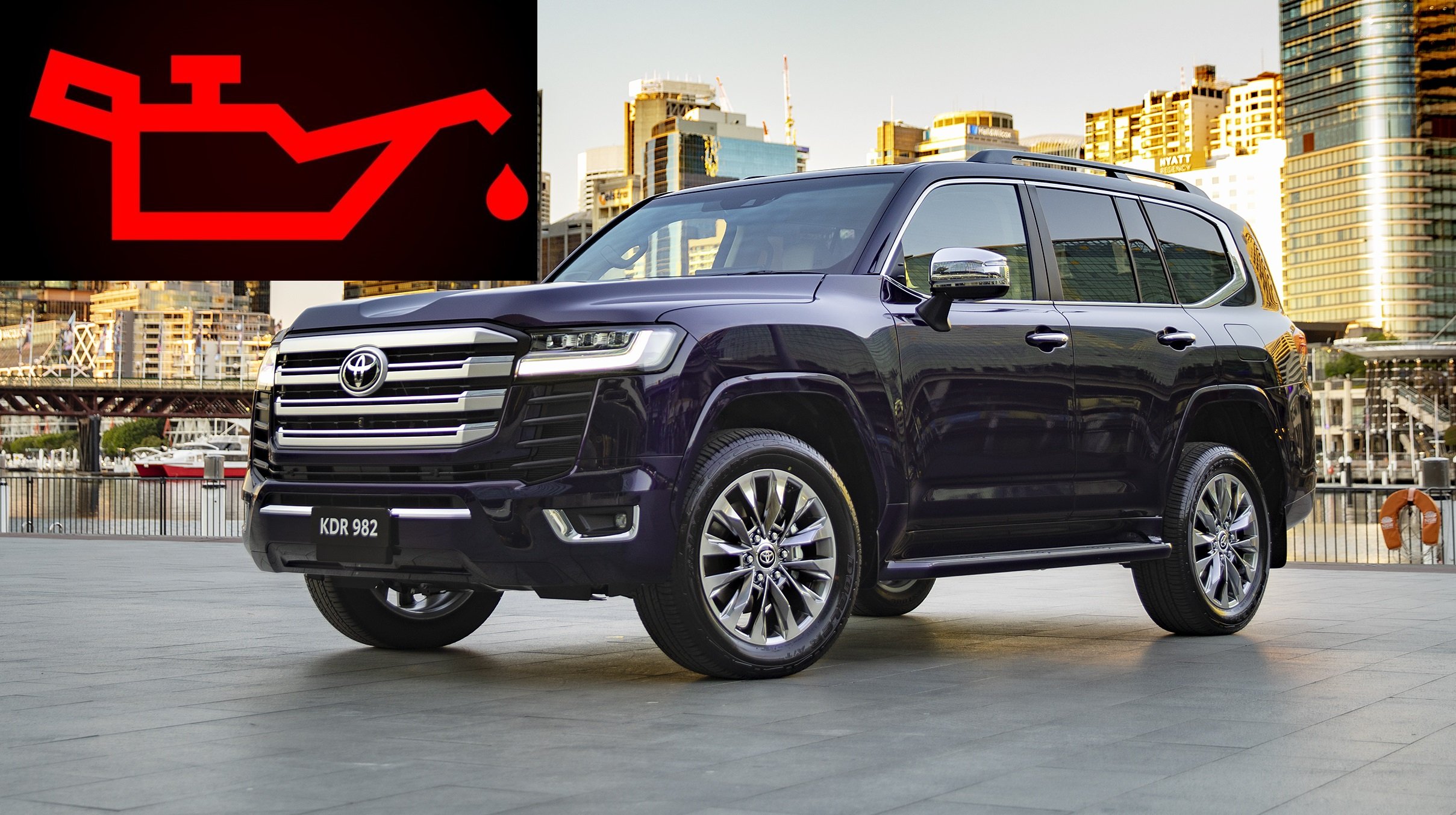Toyota LandCruiser 300 review and buyer’s guide
Buying a 7-seat 4X4 wagon like a Toyota LandCruiser 300 is common in Australia when you want an off-roader that can carry plenty of adventure gear, the family and tow a big boat or trailer. But spending six figures of your hard-earned money means asking some tough questions, and giving honest answers.
The Toyota LandCruiser 300 is supposed to be the greatest four-wheel drive chariot ever to grace Australian roads. But is it really?
It’s the king of body-on-frame SUVs and although it’s not Australian made (it’s Japanese, at least), it is an important part of the landscape to countless outback communities.
Admittedly, LC300 is a good heavy towing platform for anybody with beefy farm machinery, horses and their affiliate float trailers, tool trailers and so on.
But exactly how happy or sad and infuriated is buying a LandCruiser 300 really going to make you in the years ahead? Is it all smiles and laughter in your future, or are there dark clouds looming over you as you prepare to sign and drop your hard-earned cash on the so-called ‘King off the Road’?
Let’s look at why buying a 300 Series LandCruiser could bring you untold joy, or teeth-grinding madness. You can download the LC300 spec sheet here >> and the Toyota marketing document (AKA brochure) here >>
The Toyota LandCruiser has racked up over 10 million sales around the world since it first launched back in the early 1950s. Now, Toyota has launched the 13th generation called the 300 Series. It promises to be even more capable than ever before while boasting new levels of comfort, refinement and technology inside. But is it?
The 300 Series is serious business. This is not just a facelift to an existing model. Instead, it jumps to the TNGA-F architecture which supports more modern technologies than before, and provides improved driving dynamics over any previous generation. Well, the bar wasn’t set very high to begin with. Nonetheless, it’s still a truck and don’t worry, heavy-duty aficionados, the 300 continues with a live-axle rear suspension setup.
You have six variants to choose from in Australia, starting with the GX and topping out at the Sahara ZX, with a new GR Sport hardcore model added to the mix.
All are powered by a brand new 3.3-litre twin-turbo V6 diesel engine that produces 27kW more power and 50Nm more torque (now 227kW/700Nm) than the predecessor’s V8 diesel. This is connected to an equally new 10-speed automatic, and so far, both major components seem to be proving reasonably reliable after just three full years on the road from 2022-2024 inclusive.
But Toyota’s other brand party trick is being able to retain resale value, which we typically depend on sales volume for indication of the residual value, to see if popularity will remain steady, increase, or decline.
Well, sales in Australia would probably suggest that its popularity continues. In 2024 the LandCruiser 300 managed to sell/register 15,257 units, which was a 1.5 per cent increase over 2023 of just 222 units (total 15,035). That 2023 result was already a 14 per cent improvement on 2022 sales.
So it is a steady sales trajectory for the 300 Series, although Toyota Australia, no doubt, would prefer higher percentages.
AN UPDATED LANDCRUISER IS COMING IN 2026…
The 300 Series has already had a minor “update” for the beginning of 2025, but will get the addition of a hybrid powertrain in the first half of 2026.
Toyota says it is their “first performance hybrid LandCruiser” and will use the 3.5-litre twin-turbo V6 petrol engine from the Lexus LX600. It makes 305kW of peak power and 650Nm of peak torque, using a single motor.
It’s yet to be confirmed how big the battery will be, but it’s not unreasonable to expect it will be designed to compete with the GWM Tank 500 which uses a 1.76kWh battery, which is about the same size as the one Toyota already uses in the RAV4.
It’ll be available in full-time four-wheel drive and Toyota’s ‘Multi-Terrain Select’, crawl control and its trusty low-range transfer case for all the typical off-roading prowess we know from the current 300 Series.
Only this time it’s going to get the engine with electrical assistance from the battery and motor combination, which Toyota says:
“…has been developed with true off-road capability and reliability front of mind, with the electric motor able to provide smooth and even throttle response even in the toughest of terrain.”
The 300 Series has recently been updated in the mildest of terms, adding a wireless Apple CarPlay and Android Auto, lane centring with steering wheel vibration, what Toyota describes as “emergency steering assist” and “emergency driving stop system”, an 8-inch touchscreen and 7-inch driver’s display screen, and that’s about it.
Pricing for LC300 here is increased almost $3000 since it was introduced a few years ago, now at roughly $108,500 driveaway.
The GXL now gets “safe exit assist” which Toyota says helps “mitigate the chance of a collision when exiting the vehicle on the road side”, but doesn’t explain if it actually prevents the door from opening in addition to the audible warning tone and flashing door mirror icon.
You also now get quad-zone climate control, a chilled centre console, faux suede fabric upholstery, eight-way driver’s side electric seat adjustment (incl. lumbar support). So the value proposition for the GXL has improved slightly, although they’re now asking another $2000.
The VX no longer gets DVD/CD player capability for the kids in the back, but they’ve replaced that with an HDMI cable, which is a cheaper, inferior substitute if you don’t already have a portable DVD player.
The VX also gets a 12.3-inch driver’s display, satnav is now “connected and embedded” in the already-existing 12.3-inch infotainment screen, which means Toyota can now stalk you with even greater ease. The front passenger now also gets electric seat adjustment, as does the tailgate now open electrically where it was previously manual. The VX is now $134,700 driveaway, up from $133K a few years ago.
Toyota says the Sahara hasn’t changed from the 2024 model-year, with all the same equipment, except that it’s now $153,700 - up about $2000 from before.
The GR Sport variant now gets puddle lamps in the tailgate, and, now that you’re paying almost $160,000, you also get less frivolous features like front and rear differential locks and the electronic swaybar disconnection capability (called e-KDSS).
The Sahara ZX, which Toyota says is the “most opulent iteration of LandCruiser”, you get 20-inch alloy wheels, fake carbon steering wheel, tailgate foot sensor and a Torsen9 rear torque-sensing limited-slip differential - for the low price of $160,800 driveaway.
So just imagine how expensive the hybrid version will be.
FEATURES & PRICING
It’s not uncommon to see the flagship Sahara version in built-up areas, including in the city. Let’s just get one thing straight from the start, this is not an ideal vehicle for people living in the city. Not only is it too big and cumbersome to manoeuvre in tight conditions, you’re simply not utilising this product for what it is intended for. And that’s a waste of your money.
Imagine buying a $50,000 caravan and then only using it to have a picnic in your front yard twice a year. There are other products out there that can accommodate a picnic with less fuss and a lot less money. The LandCruiser is built to go off road and if you don’t take it off road then you’re missing the point. These big things aren’t cheap.
If you must have a LandCruiser but you’re not sure how often you’ll venture off the bitumen, if at all, then straight away I do not recommend you opt for the GR Sport. This version comes with special suspension with disconnecting sway bars (called e-KDSS) to open up suspension travel off road. But on the road, the ride and handling is not as refined as the other variants – again, the bar isn’t set high to begin with.
LANDCRUISER GX | $105,600 d/away approx. | Payload: 785kg (max) | Kerb wt. 2495kg
OUTSIDE
17-inch steel wheels (245/75R17) w/ full-size spare
LED: headlights (auto dusk-sensing, adaptive high beam), daytime running lights, front indicators, taillights
rear tailgate spoiler
front/rear mudguards
Snorkel
7-pin flat trailer wiring harness
manual tailgate
Key features include:
INSIDE
Cloth seats
Electric steering adjustment
Vinyl floor, rubber floor mats front & rear
3 drive modes
smartkey entry, push-button start
One-push auto down windows x 4
8-inch infotainment touchscreen
7-inch driver’s display
Wireless Apple CarPlay and Android Auto
6-speaker sound system
Satnav, DAB+ digital radio, 1 x USB port, 1 x 12-volt output, 1 x 220-volt accessory plug, Bluetooth
6x cupholders
2 pairs x ISOFix anchor points
DRIVING
Crawl control
Reversing camera guidelines
Electric park brake
The base GX might seem like a tempting option due to its low price compared with the others. However, this model is designed for rugged duties, first and foremost.
With narrow tyres mounted on steel wheels, the braking performance is not as good as the others that feature wider tyres. The 245/75 tyres are also made for harsh conditions and not for taking your family on a comfortable journey; these tyres will do it, but they are much more suitable and safer alternatives out there.
The GX is good for those planning a trip around Australia, though. Because you could add a couple of full-size spare wheels to your caravan and not take up too much room (or add too much weight).
The GX also comes with the full-size 110L tank (80L primary, includes 30L sub-tank), like all other variants. This means the theoretical range is 1236km. And you still get a locking centre differential and low-range to maximise off-road performance.
LANDCRUISER GXL | $120,000 d/away approx. | Payload: 700kg (max) | Kerb wt. 2580kg
Moving up to the GXL, this is the hardest variant to entice you to buy a LandCruiser, to be honest. At least on paper.
The cloth trim inside does not signify its circa-$120,000 price tag - even someone like Mazda or Subaru can conjure up some kind of pretend middle-ground fabric that offers something better than cheap polyester.
The 18-inch wheels and basic trimmings aren’t good for bragging rights down at the campsite – or glamp site. To be brutal, it’s basically saying: ‘I really, really want a LandCruiser but I can’t afford a proper one.’ But for some people, that’s the whole appeal of the GXL - you don’t want to be a tall poppy, you just want to tow the boat.
LANDCRUISER VX | $133,100 d/away approx. | Payload: 650kg (max) | Kerb wt. 2630kg
The best middle ground is the VX. It comes with plenty of luxury and a wide array of bonus features, and so it damn-well should for $134,000. You get stuff such as LED headlights (that should be standard anyway), woody bits inside, and a comprehensive safety pack including a 360-degree camera system and lane-trace assist. The camera system in particular, is important for a big vehicle like this because its circumference is so large, it’s easy to lose kiddies or pets running around unsupervised. Of course these are features you can also get on a Hyundai Palisade for $40,000 less.
Features in addition to the GXL:
EXTERNAL
Premium side steps
Premium grille
Tilt and slide moonroof
Remote power windows
Automatic rain-sensing wipers
DRIVING
Lane keeping assist with steering wheel vibration
Rear parking support brake
4-camera Multi-Terrain Monitor with Panoramic View Monitor
Power adjustable steering wheel
Satellite navigation
INTERNAL
8 cup holders
2nd row centre armrest
Driver and passenger seat back pockets
12.3-inch colour touchscreen display (no longer with CD/DVD player, only HDMI input)
7-inch driver’s display
10 speakers
Synthetic seats
Woodgrain-look and synthetic interior trim
Premium centre cluster, interior door handles and door switch trim
Leather accented gear shift knob
LED: interior lamps, rear reading lamps, door courtesy lamps
Carpet floor mats – front and rear
4-zone climate control
LANDCRUISER SAHARA | $151,500 d/away approx. | Payload: 650kg (max) | Kerb wt. 2630kg
The Sahara and Sahara ZX are the ultimate posing machines for a particular demographic.
But, these models retain most of the excellent off-road capability as the others and they do it with added luxury. The problem is, if you want to pose around, why not just buy a big BMW SUV? You’re paying a similar price for this.
The 20-inch wheels and 265/55 tyres (fairly low profile for a rugged SUV) on the Sahara ZX are not going to get you anywhere serious.
LANDCRUISER GR SPORT | $158,750 d/away approx. | Payload: 650kg (max) | Kerb wt. 2630kg
As for the GR Sport, this is basically Toyota showing off its full expertise in the land-cruising world. It comes with everything to battle serious conditions, as well as some sporty highlights like dark trimmings.
Front and rear diff locks, adaptive variable suspension, and a unique five-mode drive select system means this is set up for proper exploring. There’s no doubt it absolutely will crawl across Australia from Byron Bay, NSW to Steep Point, WA.
But unless you’re going to use all of this gear, it’s hard to justify this thing, in terms of economic rationality, that is. Not because it’s a bad product but because it’s probably going to be overkill for what you intend to do with it.
INTERIOR
This is a big vehicle, there is no doubt about it. Overall length comes in at around five metres, and it stands almost two metres wide and tall. Adding roof racks will cause problems in some underground car parks… it’s that kind of size. As a result, the interior is massive. Toyota offers five- (GX and Sahara ZX) and seven-seat configurations, and all feature a comprehensive touch-screen system measuring either 9.0 or 12.3 inches. Twin 11.6-inch screens are also added in the back seat area for the top ZX.
Toyota touch-screens are usually pretty basic in operation, and lack fancy apps or vibrant graphics. And unfortunately it’s the same here. But this has always been Toyota’s philosophy to be practical and user-friendly.
Headroom is not going to be an issue unless you’re a giant. Even then, you’ll probably be fine. However, legroom isn’t as roomy in the back as you might expect. The distance between the rear bench and the front seat is endless, but due to the way the body literally sits on top of the frame, the floor is quite high. This obviously helps with ground clearance underneath but it pushes the floor up, and pushes your knees up as well.
There are various amenities available for rear passengers, perhaps applied as a distraction to the high floor. Unless you’re in the GX, the rear has its own charging ports and semi-adjustable climate control (full control in VX and above), cup holders, and a rear centre arm rest for the VX and above. The Sahara models add heated/cooled outer rear seats, power-folding third-row seats, and a centre cool box (almost a fridge).
Toyota’s third-row seat system has improved over previous generations, so boot volume is optimised with the third row down. In the three-row layout you’re left with 175L. And Toyota says an extra 92mm of legroom has been wedged into the back row. Fold them down, now nice and flush with the floor, and you have 1004L at your disposal. Five-seat models offer 1131L.
ENGINE
Yes, Toyota has downsized from a 4.5L V8 to a 3.3L V6. If you’re an avid ‘Cruiser fan that’s owned one for donkeys’ years, then look away now. Because I’ll never change your mind. But to everyone else, this is a better engine. Believe me.
It’s more powerful, offers more torque and is more economical (official average from 9.5 to 8.9L/100km). Peak torque is spread over the same window, from 1600-2600rpm. And according to my tests, it is quicker across the 0-100km/h sprint than the old 200 Series. By around two full seconds as well, depending on the variant and its weight.
The only reason to dislike this engine is because it’s new. And by that I mean there could be teething issues, like with any all-new product. What else? Well, the only other excuse I’ll take is that it is worse for towing. Slightly.
With a lower compression ratio of 15.4:1 compared with 16.8:1 in the V8, and obviously fewer cylinders and a smaller capacity, engine braking is not going to be as effective as the old V8. With 10 speeds though, engine braking is smoother, because each ratio change isn’t as extravagant as with the old six-speed gearbox.
The new V6 is reasonably quiet on the road, for a diesel, particularly at highway speeds. It hums instead of chugs. Accelerating up to speed produces a somewhat off-beat churn, but it does sound more refined than the old V8 and it is smoother.
The sequential turbocharging means the first one is working at low speed take-offs before the energetic exhaust flow spools up the second unit at 2600 revs and speed picks up surprisingly rapidly.
I wouldn’t recommend taking the big girl on a spirited drive down a mountain road, purely because it is so big and the suspension is not primarily designed for this style of driving. It leans into corners, albeit less than before, and the tall tyres roll and provide a slow response time between your hands and the wheel.
It is nice to drive on a country road, however. The long-range suspension easily soaks up even the harshest of surfaces, and the wheels tend to bounce and skip across corrugations less than before.
Off road performance is, as you’d expect, outstanding. With a running clearance of 245mm (up from 230mm) and a good approach angle of 32 degrees, the chances of coming across terrain that you can’t cross is very limited. In terms of moderately maintained tracks, anyway. This beast barges over mounds, carves through sand, and churns through thick mud like a military on a mission. It’s definitely great at this sort of stuff.
MAIN COMPETITORS
Look, if all you want to do is prance around the suburbs and pretend you need one because you’re a ‘country’ person at heart and you have a horse box to tow, then I think you’re missing the point. LandCruisers are about dependability, in all environments. Something you can heavily rely on because there is little else that comes close.
Although Toyota has clearly evolved the nameplate for the next generation of buyers, adding fancy tech inside and improving comfort and on-road refinement, this is still a heavy-duty, very large, very expensive but highly capable all-terrain machine. You’re not going to get your money's worth unless you really need it, and use it.
Having said that, there’s also the brawny Nissan Patrol to consider here, because it’s got a $30,000 price advantage over the LandCruiser. That’s $30,000 worth of fuel you’ll struggle to buy over the lifespan of your Patrol, even if you used it as a daily driver. Patrol might be as old as the hills, but it still works out, it’s just a reliable, just as tough and capable, more comfortable and more affordable.
The Y62 Patrol Ti-L has incrementally risen in price over the last five years, but that hasn’t slowed sales - in fact it’s probably managed to steal sales from the unfaithful, discerning Toyota LandCruiser buyers, especially those who knew what was coming with that ‘Hot Vee’ engine layout.
The Ti-L is currently $97,900 before adding on-road costs, making it now a $100,000+ driveaway luxury off-road weapon, trading blows with the supposedly superior new LandCruiser 300, despite having the same key driveline features like centre differential, rock crawling, big tyres, over 240mm of ground clearance and solid hardcore underpinnings. (Although Patrol has 275mm of ground clearance versus 245mm in LC300 GX, GXL and Sahara model grades.)
Despite its age, a Patrol will absolutely keep up with the LandCruiser in the dirty stuff. But spec-for-spec, you’ll be sitting on heated, electrically adjusted leather seats in all three rows in your Patrol, while your mate in his poverty pack LandCruiser GX ($94,300 + ORC) will be injecting his farts into cloth seats, with the poor-man’s 6-speaker stereo (versus your kickarse 13-speaker Bose boombox with DVD player, row-2 LCD screens with headphones). You get a 360-degree camera system and seat-position memory, your LandCruiser mate is sliding forward doing the dog-with-worms shuffle.
You can easily spot the GX LandCruiser by its tiny, cheap-looking 17-inch steel wheels which will certainly contrast against your 18-inch machine-faced alloys (with matching spare). You’ll have curtain airbags protecting occupants in row 3 while nobody will have the same in the GX because it’s strictly a five-seater.
If you want a seven-seat 300, you’ll be stumping up an additional $8000 over the top-shelf Patrol, just to get row 3 in a GXL for $106,000 - before you’ve even paid on-road costs. But at least Toyota has stuffed a couple of curtain airbags either side up there for row 3. They’ll still be listening to the pov-pack stereo, with no climate control, sitting on thin cloth seats and heaving the tailgate open manually.
One distinct advantage of a bare-bones GX LC300 over a top-spec Patrol is superior outright payload which is 785kg, with a full 110-litre tank of diesel. Payload goes down sightly as you go up the range (700kg in GXL, 650kg in Sahara), but unfortunately for LandCruiser, payload limit in a base model Ti Patrol also goes up as you go down in price - levelling 785kg in GX, meaning you can get more fruit in a base Ti Patrol for just $92,500 driveaway. That’s a $10,000 saving, with greater payload, and it’s still a seven-seater to GX’s five.
And the towing argument for LC300 starts to lose out against Patrol as well, because both are limited to 3500kg of maximum braked capacity, with 350kg of towball download on all model grades - but Patrol is going to be the more dynamically stable vehicle under extreme towing assignments due to its greater overall mass. (Just remember to subtract towball download from your payload if you’re towing and taking people, luggage etc.)
Patrol Ti-L, with a full 140-litre tank of 95 RON unleaded weighing about 105kg, comes in at 2863kg - yes, 2.86 tonnes, before the driver is even aboard. The also-heavy LandCruiser 300 Sahara ‘only’ comes in at 2630kg full of diesel, pre driver onboarding. That’s a 233kg advantage to the Patrol but only in the context of an extra-heavy towing mission, between 3000-3500kg.
It’s this primary reason LandCruiser 300 and Nissan Patrol are being recommended here, because anybody needing to tow horse floats, bobcats, car trailers, dual-axle caravans and tour endlessly this big brown land - these two vehicles are king in terms of dynamic stability at highway speeds when the loads get extreme.
It’s the flipside of the same coin, why towing 3500kg with a dual-cab ute is dangerous >> So buying a Ford Ranger to tow 3.5 tonnes is sketchy at best >>
I'll help you save thousands on a new Toyota LandCruiser 300 Series here
Just fill in this form. No more car dealership rip-offs. Greater transparency. Less stress.
SAFETY
The 300 Series LandCruiser has a 5-star ANCAP safety rating as derived from testing done in 2022, the entirety of which was conducted by ANCAP locally in Australia. The rating applies to all model variants except the GR Sport.
In the primary destructive tests like the frontal offset, full width and side impact tests, the LandCruiser gets decent marks - but it is not as good as you might expect from a 2.6-tonne full-size 4WD wagon. In the frontal offset test at 50km/h, the driver dummy records:
MARGINAL protection for the driver’s chest and ADEQUATE protection for the lower legs
For this, LC300 failed to achieve the full marks (of 4 points each) in this test, but nonetheless, it passes with decent results. Same goes for the rear occupant protection in the 50km/h full width test, where another ‘marginal’ result for the chest protection is given.
LandCruiser also received 4 points deducted for the incompatibility of the vehicle, which saw the much bigger, heavier LC300 presents:
a higher risk to occupants of an oncoming vehicle
The concern here is that being hit by a LandCruiser is going to mean any smaller, lighter vehicle will be significantly more damaged, and occupants will be subjected to greater loads. This is of course based on the ‘mobile deformable barrier’ trolley being car-shaped and weighing only 1400kg - which is not representative of the most common cars today, they being SUVs.
The overall result is still going to be similar, even if the trolley was more representative, like the IIHS’s 1900kg SUV-sized trolley used to emulated the median vehicle in North America.
Here’s the official ANCAP video of LC300 being tested:
LandCruiser, like most large 7-seat SUVs, get good marks for the side impact test where the 1400kg trolley (simulating a car) hits the B-pillar, and in the oblique pole test at 32km/h it perform perfectly.
Unfortunately however, typical of Toyota not future-proofing a vehicle they’re planning to sell for the next 12 years, there is no front-centre airbag to prevent front driver and passenger head-to-head impacts.
Toyota future value: no front-centre airbag for the next 10 years.
In child opccupant protection LC300 got very high marks with only marks deducted for a certain Type A ISOFix compatible restraint unable to be installed and absolutely no restraint anchor points in row 3.
What’s also disappointing for prospective regional buyers whom probably live in areas where the road meets the dirt with no edge markings, it seemed the LandCruiser did poorly stopping itself going over the edge. See below.
This is a good example of paying over the odds for a vehicle that is apparently brilliant off-road, but seems to want to go there even if you don’t want it to. To be fair here, you shouldn’t be letting the vehicle run off the road anyway, but the consequence in that situation shouldn’t be a massive crash - and any reasonable person might expect their 130,000 LandCruiser (with lane-keeping) to be able to step in at that crucial moment.
And just for context here, Ford Ranger was tested in 2022 to the same criteria and received all-green marks for those above ‘Road Edge’ tests of the lane keeping system. Mitsubishi Triton was the first vehicle to receive 5 stars tested against ANCAP’s latest protocols, and it scored perfect greens for this same ‘Road Edge’ lane-keeping test.
DRAWBACKS
If you want to be well informed about what you’re getting yourself into when it comes to buying a Toyota LandCruiser in 2024, because that’s how long you should expect to wait for yours to arrive, it’s a good idea to understand what ‘foibles’ you might come across.
Check out Everything wrong with the LandCruiser 300 here >> and go into detail about Why the LC300 Hot Vee engine design sucks >>
PRICE
There’s no easy way to swallow this pill, other than brutal honesty. The 300 Series is bloody expensive why you consider driveaway pricing: $102,700 - $156,600 in Victoria, for example.
You’ll be paying over $4500 in Luxury Car Tax, even for a base model GX with cloth seats. Want a Sahara? That’s roughly $147,000 thanks - including $14K in LCT - straight into federal consolidated revenue.
Having said this, the fact you’re here, considering a 300 Series, you’ve probably already come to terms with the high pricetag. If you’re reading this particular paragraph, you’re probably not put-off by all the zeroes, in which case you have the budget and there is a specific heavy-towing, family touring working life coming up for your prospective ‘Cruiser. So let’s move onto the next objective hurdle you need to overcome in order to make friends with the 300 Series.
OIL CONSUMPTION
The 3.3-litre ‘hot-vee’ twin-turbo V6 engine is, according to leaked Toyota Nunawading dealer documentation, burning about 1.7 litres of oil between service. The sump holds 6.6 litres of engine oil, activating the engine oil warning light when the sump reaches 4.4 litres.
This is happening inside the manufacturer’s scheduled service interval, where about 30 per cent of the engine oil is being burnt and blown out the exhaust. You can watch my full report on the oil-hungry LC300 hot-vee engine here >>
And how do you resolve this alleged oil consumption issue? Take it into your local Toyota dealership in between services.
How often are the service intervals? Every six months or every 10,000km, whichever occurs first. This is ridiculous. Some potential buyers are going to be a quarter of the way into their Big Lap of the continent and they’re going to be expected to stop in at a Toyota dealership, sit in the service department and wait for this to be sorted out. Some holiday. And too bad if you’re in the dead centre of the Great Australian Bugger All, two days from the nearest dealer.
Do you really think it’s satisfactory to be bringing in your $100,000+ Toyota every three months for additional servicing because it drinks a third of its oil every 12-18 weeks? This might not be an issue for you, but for those whom it is problematic, at least you’re aware of what you might be up against here.
For balance here, modern engines are allowed to burn small amounts of oil as a result of tight clearances between piston rings and cylinder walls, in the pursuit of fuel economy and efficiency. it’s okay for modern engines to require low-level periodic topping up. But there’s a point at which too much becomes exactly that. We just don’t know to what extent this issue will metastasize throughout the 300 Series. Will it become a serious long-term reliability concern, or will it become a known characteristic of this engine that becomes manageable over time? We don’t yet know the answers to these kinds of questions.
Does this make the 300 Series some kind of lemon in an apple’s clothing? No, not really. The jury’s still out on exactly how Toyota Australia will handle this, from a customer care and Australian Consumer Law point of view. Hopefully the outcome of the 2.8 DPF saga was lesson enough to get on the front foot and solve the issue, or at the very least be transparent with customers. Sorry, ‘guests’.
It’s worth noting here that Toyota Australia managed to orchestrate a DPF burn-off switch for its troubled 2.8 diesel when they were pressured enough to acknowledge the first fuel of Automotive Fight Club: be straight with the customer.
Toyota Aus absolutely has the budget and technical capability to come up with an in-service fix for the oil consumption issue if it worsens. And you also should be aware that there’s no such thing as a perfect vehicle, and certainly no new vehicle (with such a complicated new engine) is ever perfect straight out of the blocks. Carmakers are always issuing service bulletins and repair notices for vehicles in-service - which is what will likely happen for the 300.
CONCLUSION
Overall, the LC300 is not a lemon, and it’s not exactly going to be a Land Rover Defender in terms of poor reliability and abhorrent customer service. Toyota has trouble coming clean when it makes mistakes, but it’s absolutely not Volkswagen, Mercedes-Benz or Land Rover in regards to throwing your consumer rights under the bus - they just have room to improve.
And certainly, having the biggest dealer network in the country does mean there is some kind of help even in the remotest corners of ‘Straya. Not to mention virtually any Toyota enjoys awesome resale value, so your 300 is still going to be worth good coin after you’ve tipped gallons of oil into it and clocked 200,000kms. Chances are it’ll still be ready to do another 200-thou.
If you have heavy towing in your future and you need a vehicle that flat-out refuses to be pushed around by horse floats, car trailers or heavy duty machinery, and LandCruiser 300 is going to be a good choice.
Regarding the oil consumption issue, it needs to be said that some oil consumption is not entirely, unspeakably reprehensible for a modern vehicle, particularly a twin-turbo V6 diesel. But you need to be aware there is a chance, however slim, that it might be higher consumption than you expect.
Overall, however, it’s not guaranteed that your vehicle is going to have this issue, especially if this is a second-car type occasional-use ownership arrangement. Toyota is also quite capable of in-service fixes for things of this nature, so don’t scrub it off your shortlist at the first sign of imperfect operation - no new vehicle is free of faults in the first phase out of the blocks.
And burning oil is not going to stop your LC300 from performing those hard yakka tasks like serious low-range off-roading, pulling heavy stuff and taking the family out on the road for months at a time, packing all but the kitchen sink.

